

WEEK 18 - MAYS GO BY (way too fast)
Some months seem to drag, and I find myself wishing time would speed up so the next season would arrive sooner. May, on the other hand, is a month that I wish I could stretch out over two or three months. It's already half over, and I feel like I've barely scratched the surface of what I hope to get done. It's like that every year.
First, I have a number of flowering trees in my yard, including apple, pear and crabapple. I always try to get pictures of birds either feeding or perched in the trees while they're in full bloom. A few years ago I had several Baltimore Orioles and a pair of Orchard Orioles feeding on the blossoms for days and got lots of pictures. Every year since then, the timing has been off, and either the blossoms came out early and the birds had not returned yet, or, the birds returned later than usual, like this year. I did have a brief visit by a first year Orchard Oriole this year, but got no pictures and just got a few of this young Baltimore Oriole feeding in the apple tree.

Fortunately, there were plenty of colorful feeder birds to fill the void, like American Golfinch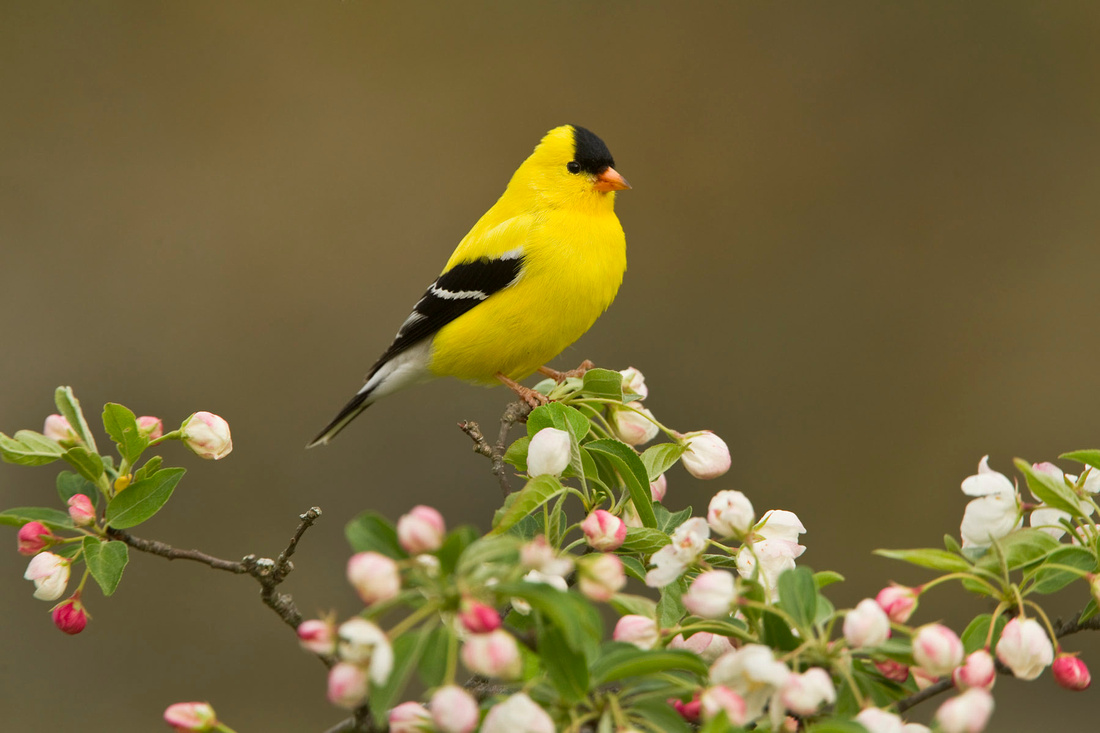

and Northern Cardinal.

Keeping the feeders out in the spring is a mixed blessing, as I also attract hordes of House Sparrows, Brown-headed Cowbirds, Red-winged Blackbirds and Common Grackles (pictured below), although they can be attractive in their own right.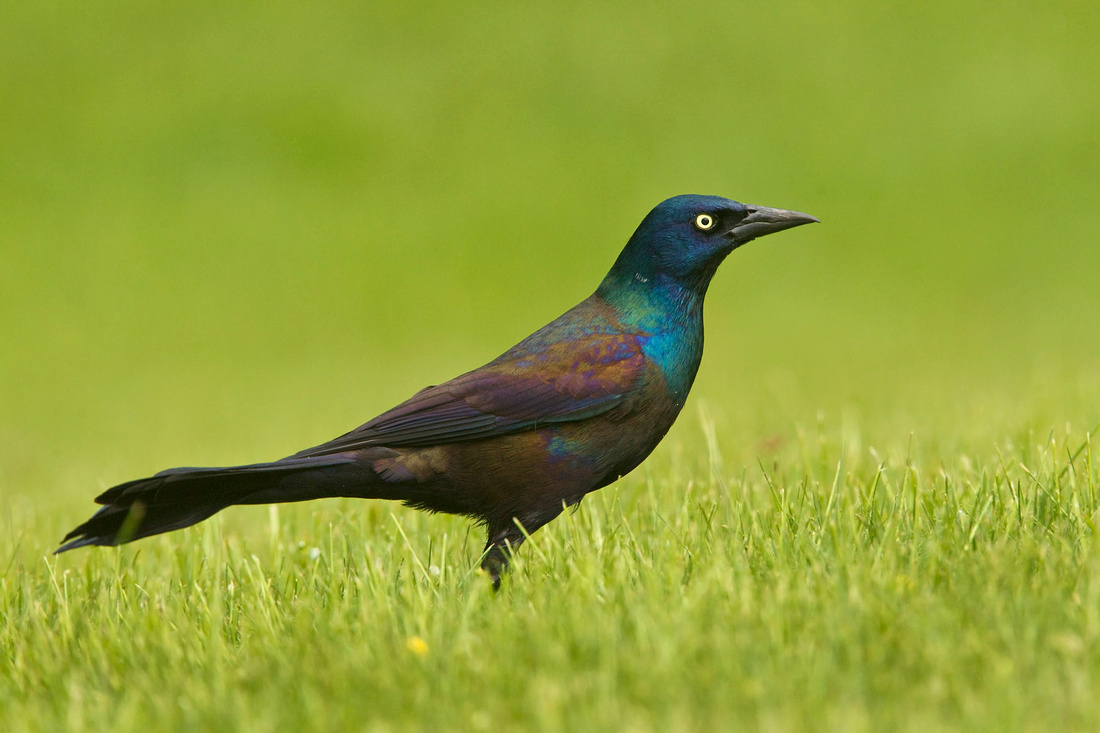

Beyond the "eye candy" at home, there are all the summer residents returning to their breeding territories. The optimal time to photograph these birds is when they first arrive and establish their territory. Once they have paired up and started nesting they are much less conspicuous. So the trick is to find the birds when they first arrive, and there are all different types of habitat to search. Along the shoreline, shorebirds and wading birds are the first targets. At Hammonasset, I photographed Glossy Ibis in the marsh,

Little Blue Heron in a salt pond,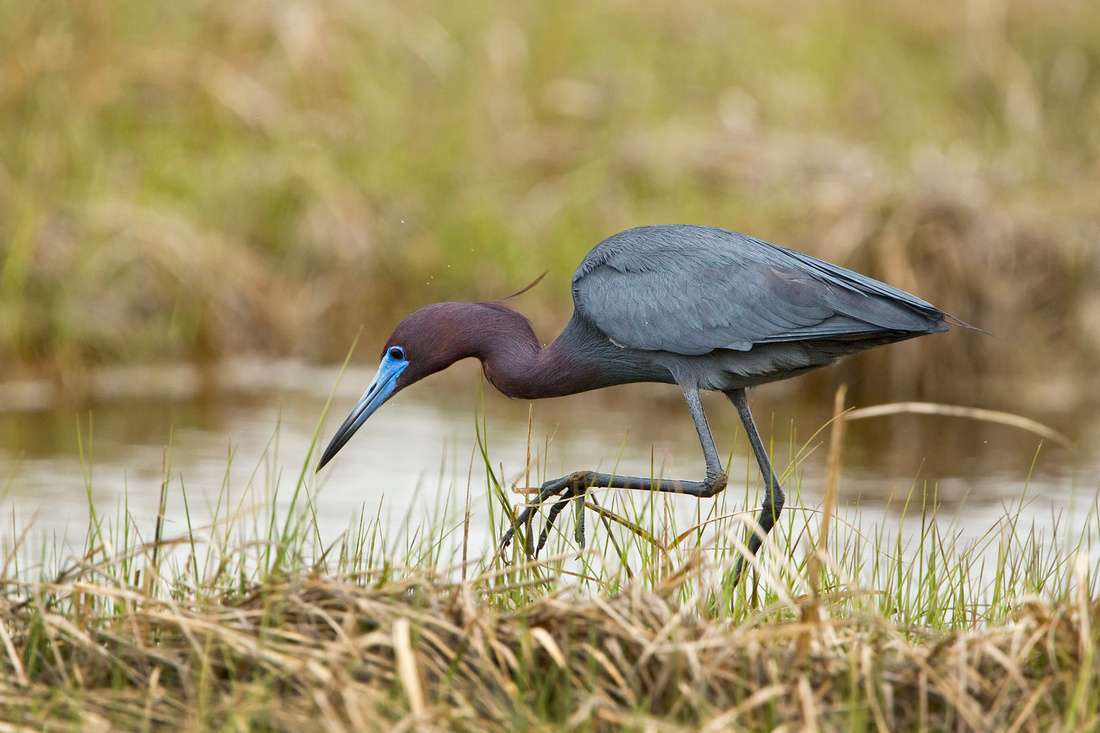
 and a late pair of migrating Northern Shovelers at the Swan Pond.
and a late pair of migrating Northern Shovelers at the Swan Pond.
 Inland, the subjects are even more varied. Along field and forest edges, a bounty of birds can be found. I try to visit power line cuts, like this one near Hartman Park in Lyme, for this type of habitat.
Inland, the subjects are even more varied. Along field and forest edges, a bounty of birds can be found. I try to visit power line cuts, like this one near Hartman Park in Lyme, for this type of habitat.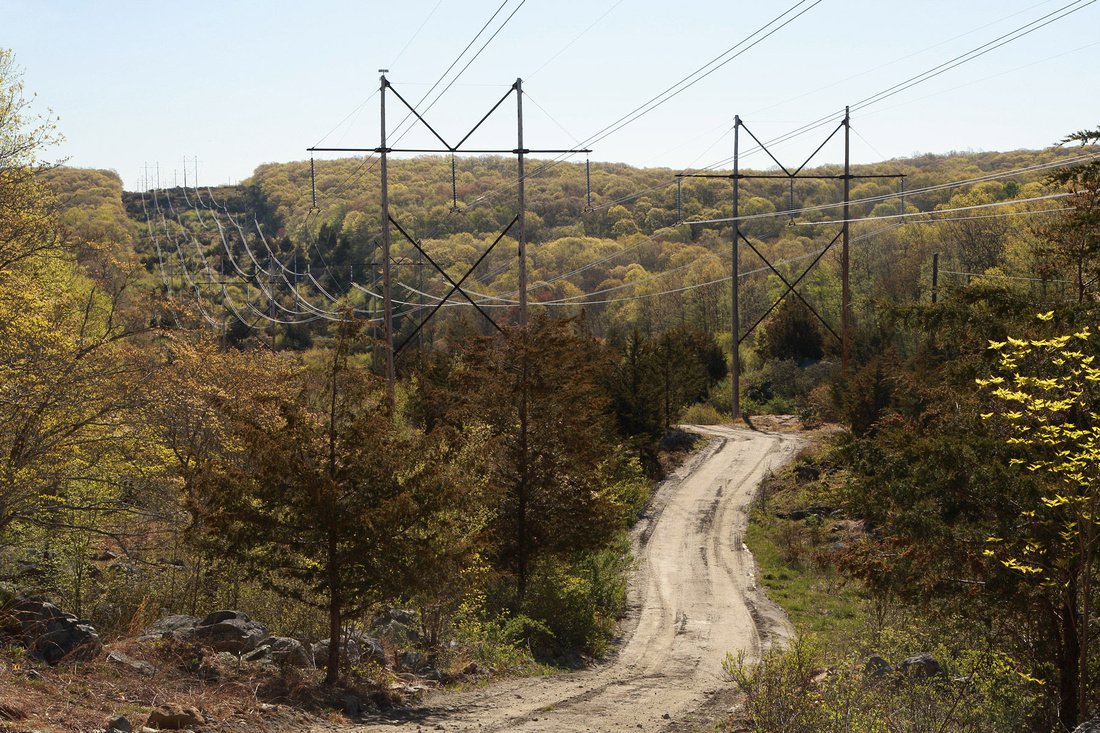
 Among the residents are buzzing warblers like this well disguised Prairie Warbler, who was singing from the top of a sapling,
Among the residents are buzzing warblers like this well disguised Prairie Warbler, who was singing from the top of a sapling,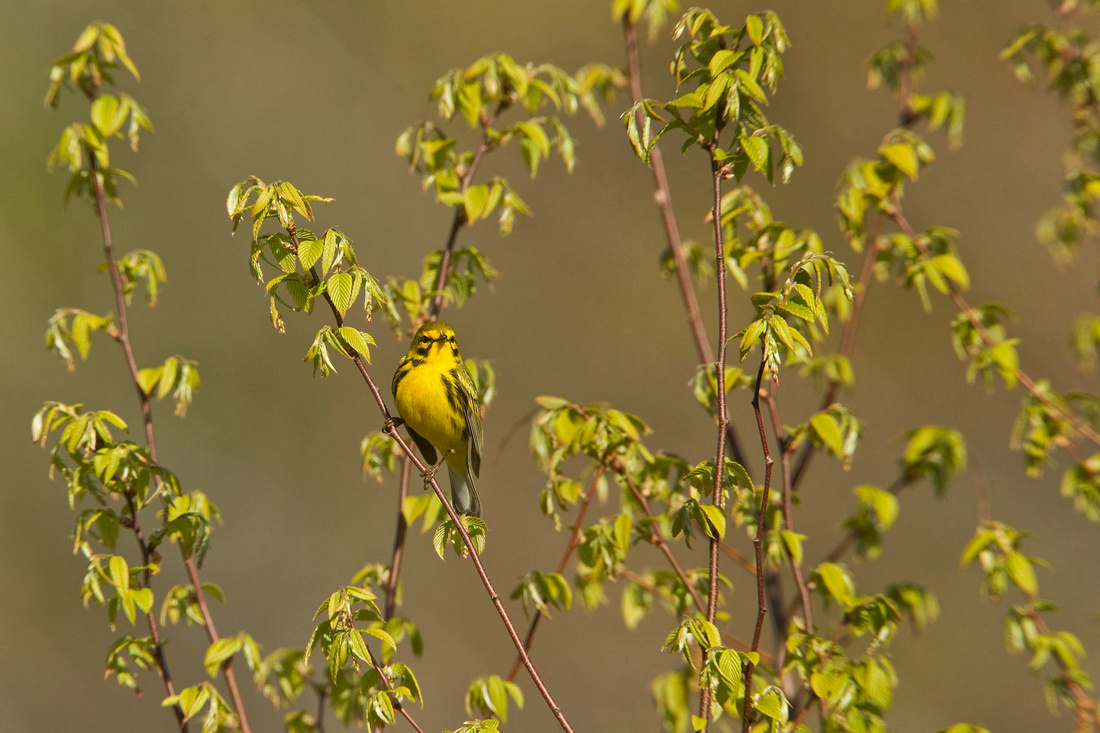
 and Blue-winged Warblers abound in the low shrubs and grasses.
and Blue-winged Warblers abound in the low shrubs and grasses.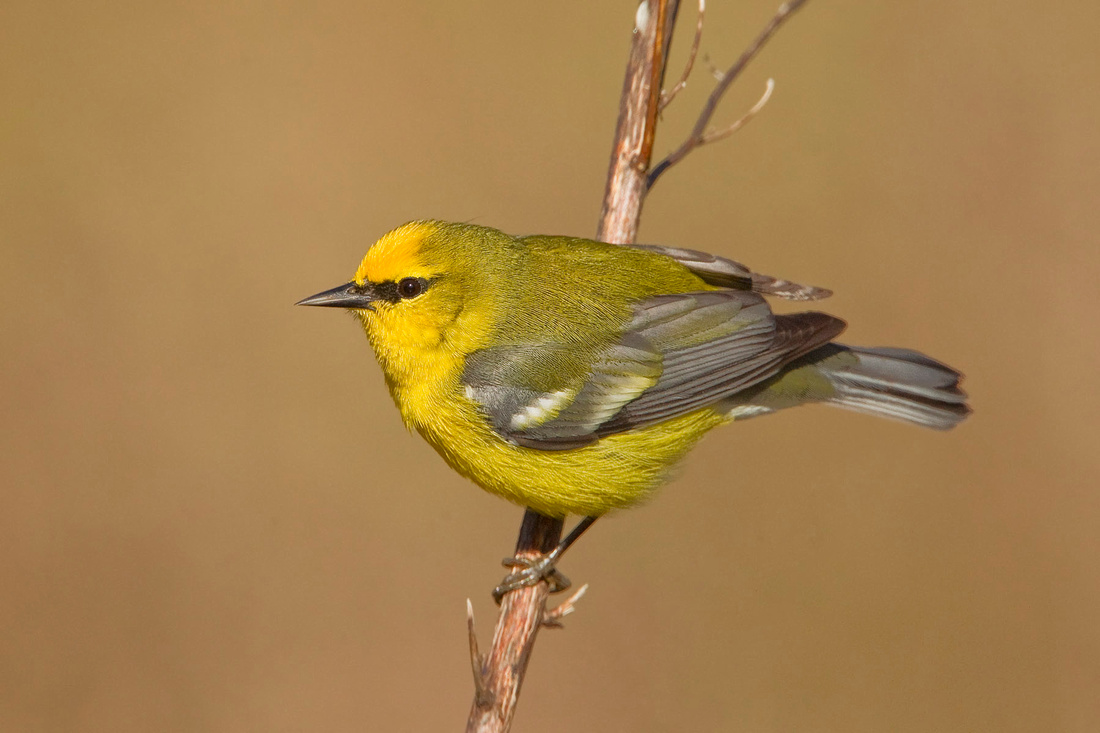
 In the woodlands, Baltimore Orioles sing and chatter noisily and are easy to find.
In the woodlands, Baltimore Orioles sing and chatter noisily and are easy to find.
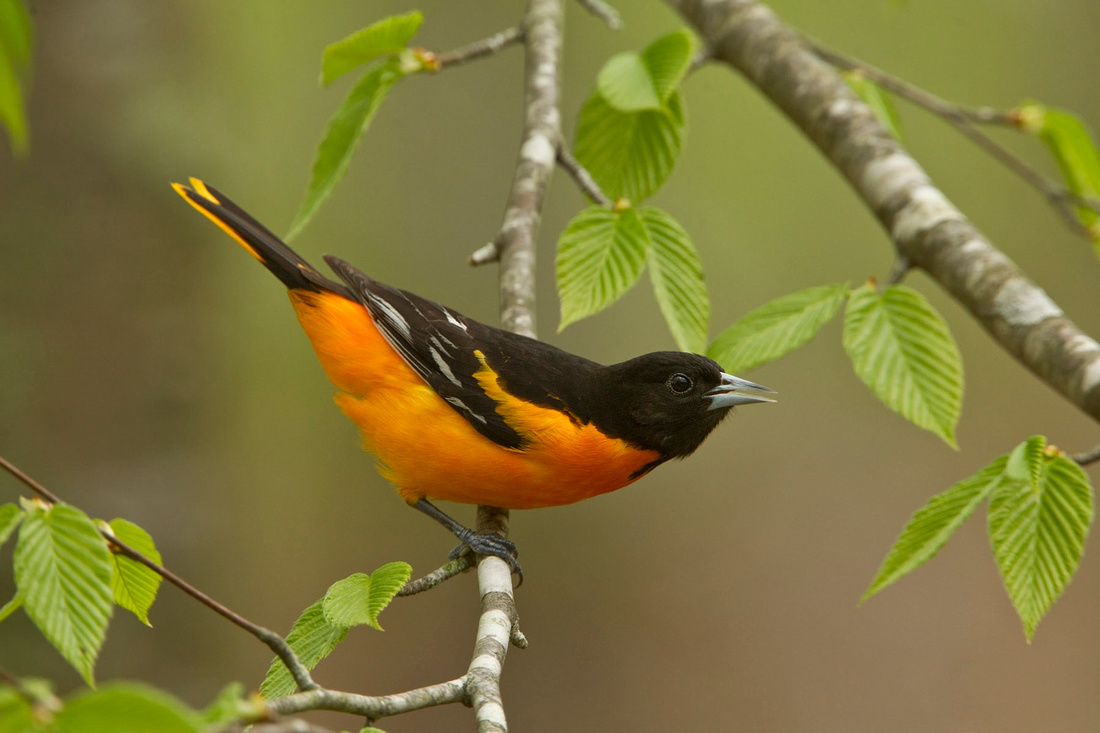
 and warblers, vireos, tanagers, flycatchers, grosbeaks and thrushes add their voices to the song-filled woods. Sometimes, migrants passing through can be found along with the residents. In Nehantic State Forest, a plain looking thrush I expected to be a Veery turned out to be a migrating Swainson's Thrush. Migrants are another exciting May target, which I'll cover more about in my next post.
and warblers, vireos, tanagers, flycatchers, grosbeaks and thrushes add their voices to the song-filled woods. Sometimes, migrants passing through can be found along with the residents. In Nehantic State Forest, a plain looking thrush I expected to be a Veery turned out to be a migrating Swainson's Thrush. Migrants are another exciting May target, which I'll cover more about in my next post.

As May draws to an end, I usually shift my focus to finding nests to photograph, but it's still early for that, or so I thought. While walking along a woodland stream on May 8, a small bird flew out from a few feet away from me and fluttered over the water. I had accidently flushed a Louisiana Waterthrush from its nest in some upturned roots. I could partially see the nest through the hanging root fibers, and what appeared to be a cup of brown speckled eggs. I quickly bent down to take a shot of the nest area and noticed a lightly speckled white egg in the water. The nest is marked by the top arrow and the egg by the lower.
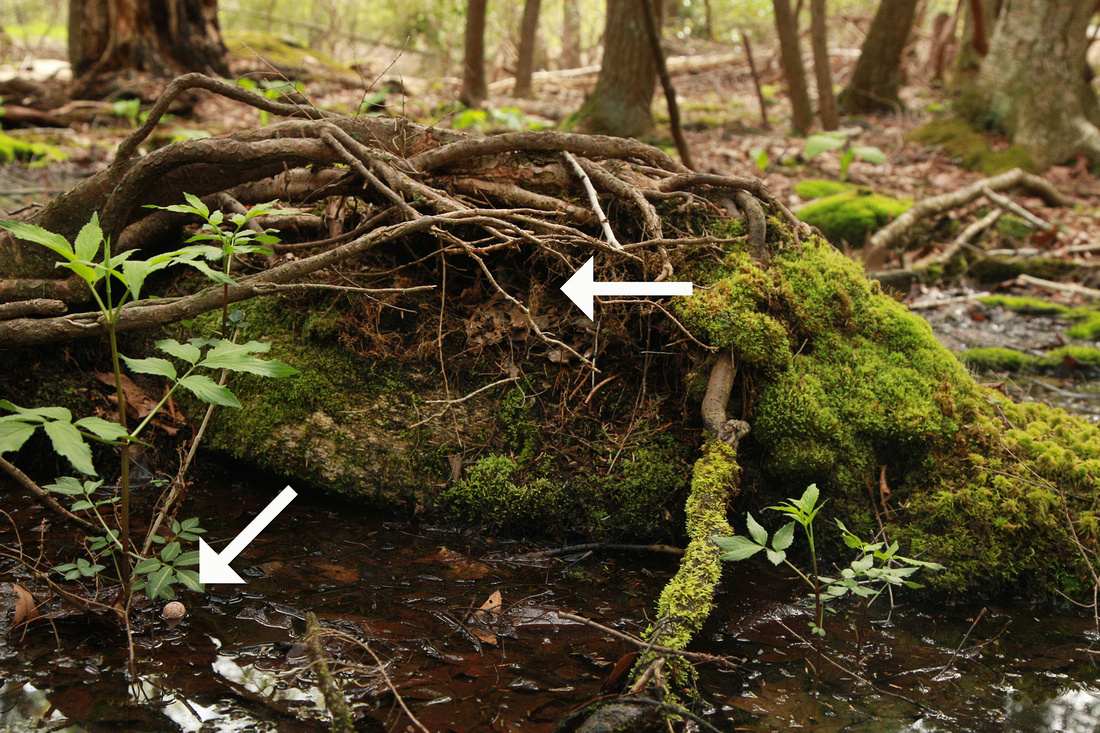

As I stood to leave, I saw another white egg at the edge of the stream, right at my feet.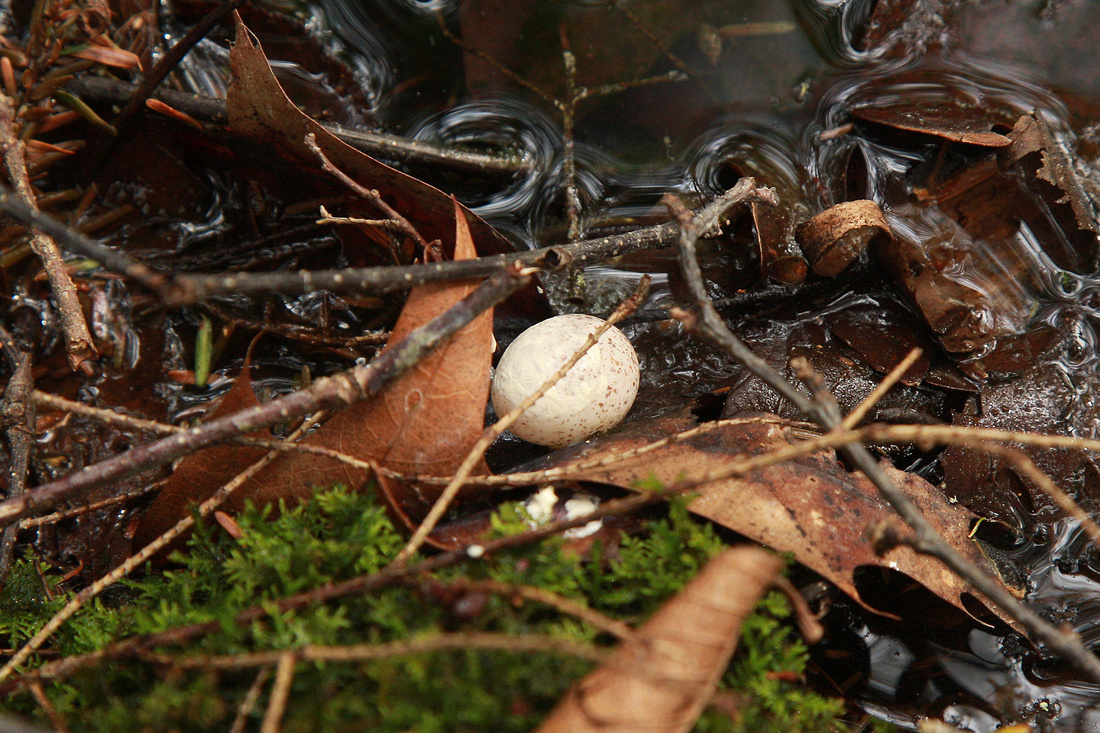

I quickly retreated and left the area. I feared that eggs were scattered by a Brown-headed Cowbirds that had parasitized the nest, since I heard them in the canopy above the stream. That night I looked up the eggs of waterthrush and cowbirds in a book I have, and my fears were confirmed. I generally do not try to photograph songbirds nesting while they are incubating, because of the risk of them abandoning their eggs. I may try to return in a couple weeks to see if chicks have hatched and if it's even possible to photograph the nest. Well downstream from the nest I continued my streamside search and found this Nursery Web Spider on a a skunk cabbage leaf.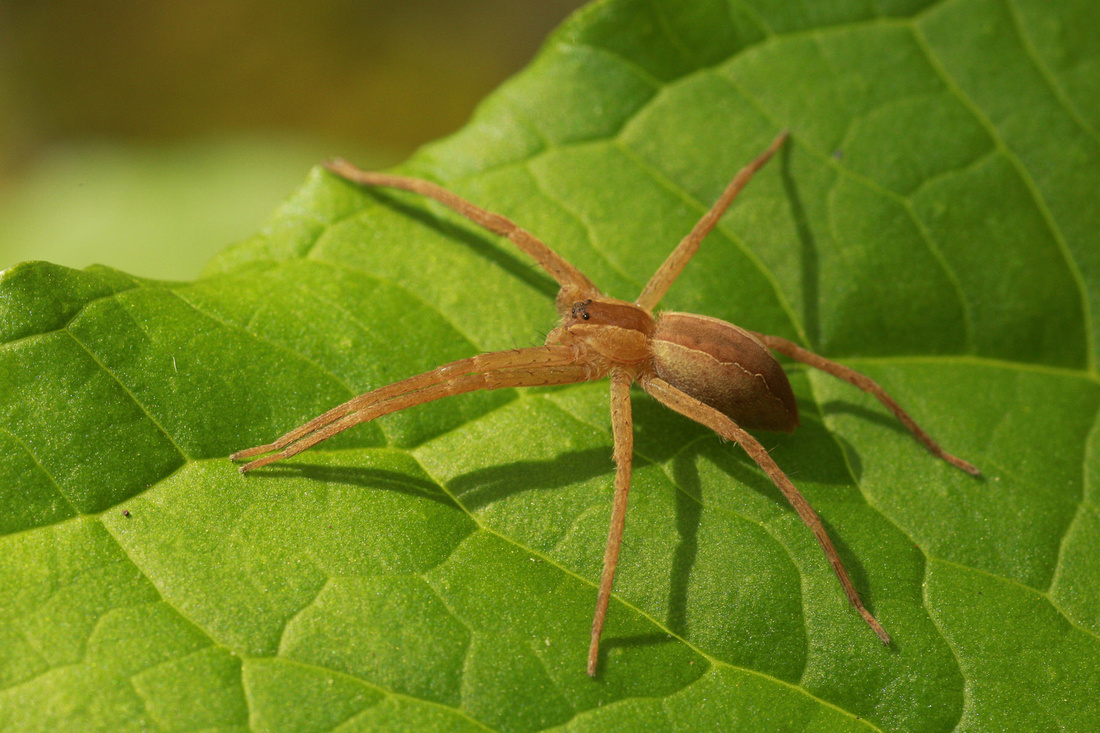

Perhaps the best find I had last week was a beautiful Eastern Box Turtle at the edge of a road in Lyme. I have never seen a box turtle in the wild, and they are growing increasingly rare in the state. I decided to move the turtle from the roadside since they are apparently hit by cars while crossing the road a lot (there were several controversial turtle crossing stories while I worked at the Hartford Courant). After a brief photo shoot, I placed the turtle about 20 feet off the road in the direction it was pointed when I found it. I hope that keeps it safe.

HYBRID HERON
This morning at Hammonasset I saw and photographed what looks like one of the hybrid Little Blue Heron x Tricolored Herons that have been seen there the past two years. It flew into the back of the Meig's Point Pond by the footbridge near two Little Blue Herons. It stayed briefly before being chased away by one of the Little Blues. Here are two record shots of the bird showing the long bill, mottled look and dull yellowish legs, along with the white feathers on the underwing seen in flight.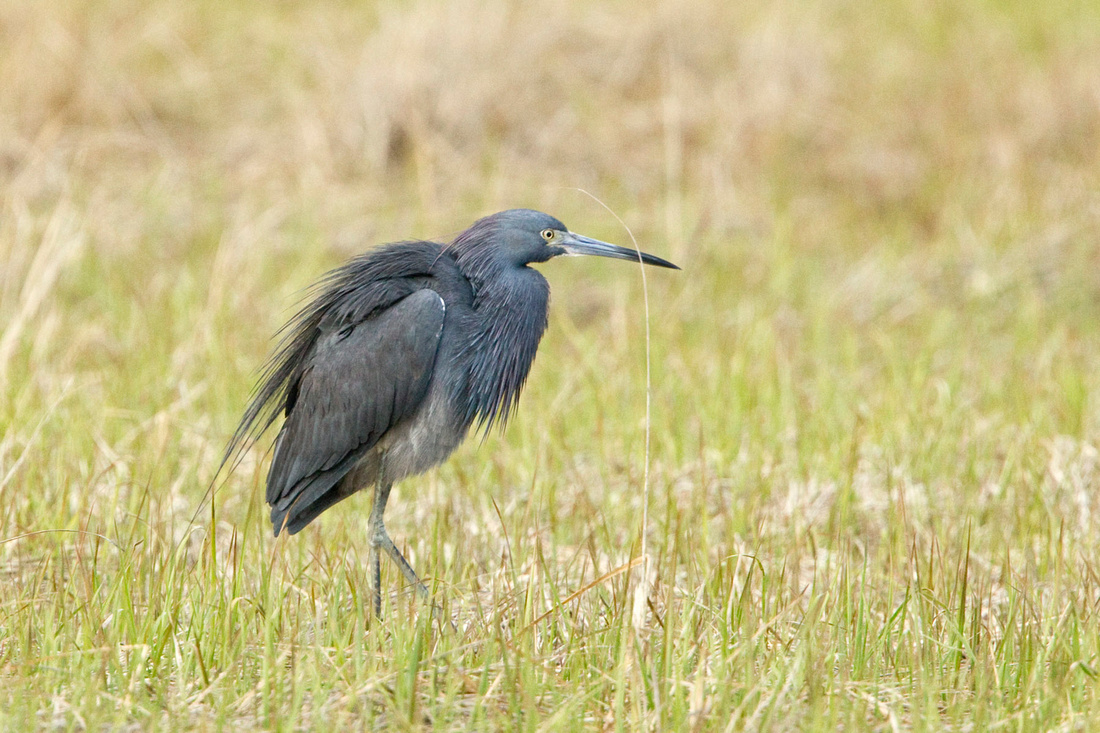

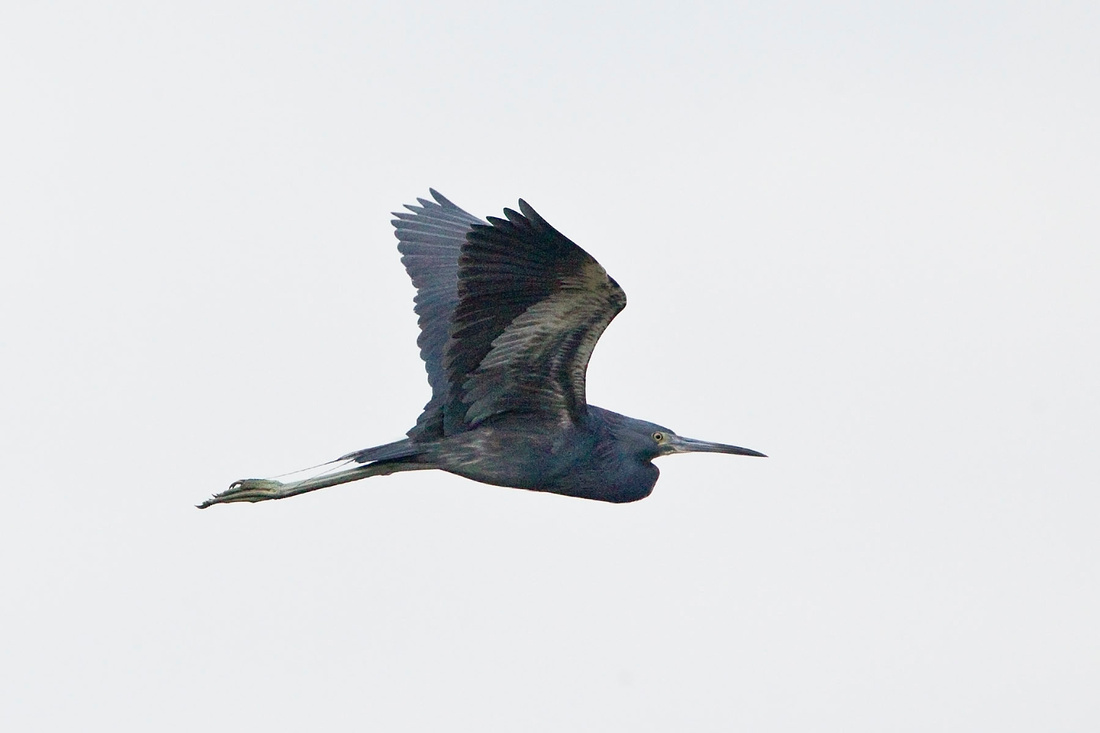

Below is one of the Little Blue Herons in the park from a few days earlier for comparison.

and an adult Tricolored Heron taken at the same pond almost exactly a year ago - note slightly longer bill and white underwings.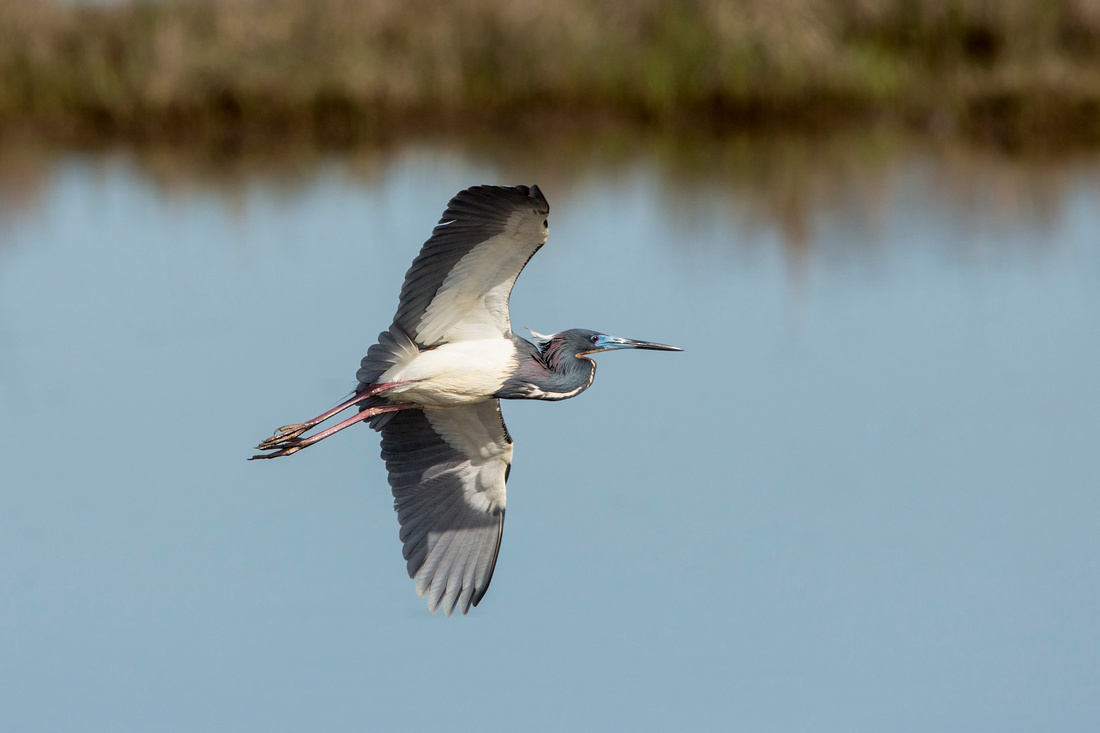

and finally a shot of one of the suspected hybrids from last fall for comparison.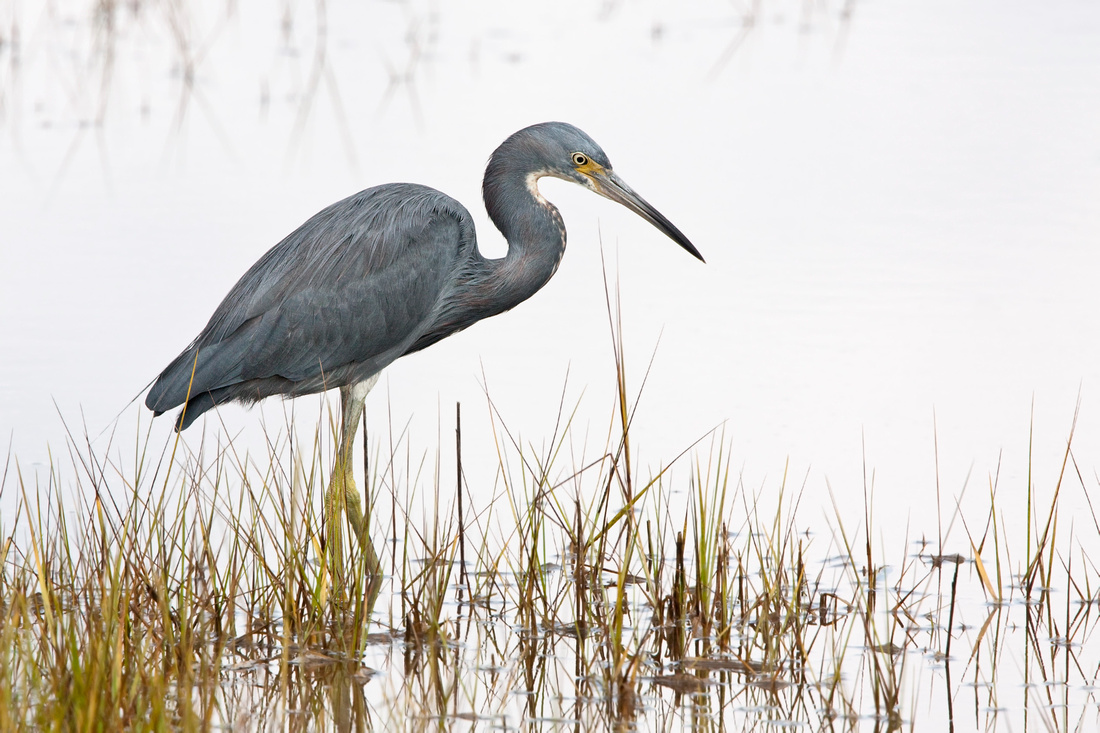

WEEK 17 - SOMETHING TO SING ABOUT
It's finally here. The waves of new birds, some summer residents, some migrants on their way farther north, have started to hit the state in earnest. The prolonged period of easterly winds this past week has apparently kept the big waves from hitting us, and there were some disappointment from birders who lamented the "Dearth of Warblers", but the steady buildup of new birds is undeniable.
Before I get to that, though, I continued to follow the loons in Niantic Bay, and the one I photographed for my previous post continued to linger and was joined by another Common Loon in full breeding plumage fairly close to shore. Several birders have reported seeing Common Loons in full breeding plumage on ponds, lakes and along the shore in Connecticut this year and wondered if this is unusually late for them, which I have been wondering myself. I can't recall ever seeing loons that looked like these in the state in more than 20 years of birding. The first is the original one, still with a few patches of gray feathers around the eyes.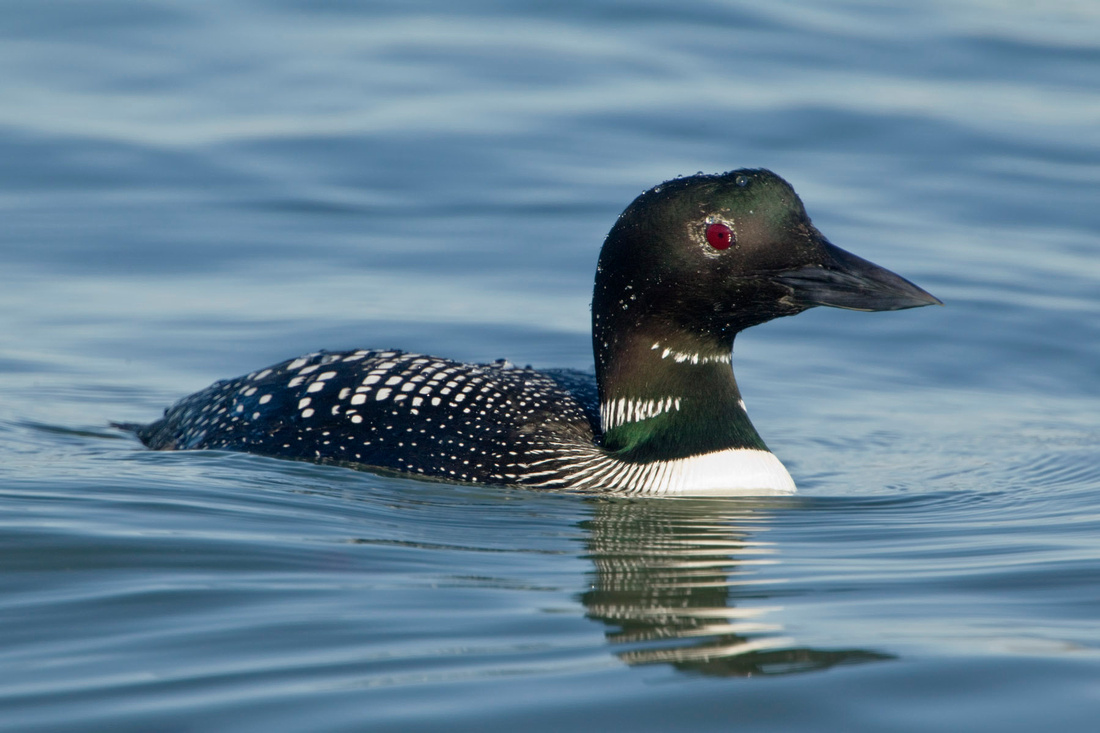

and then the very sharp looking newcomer.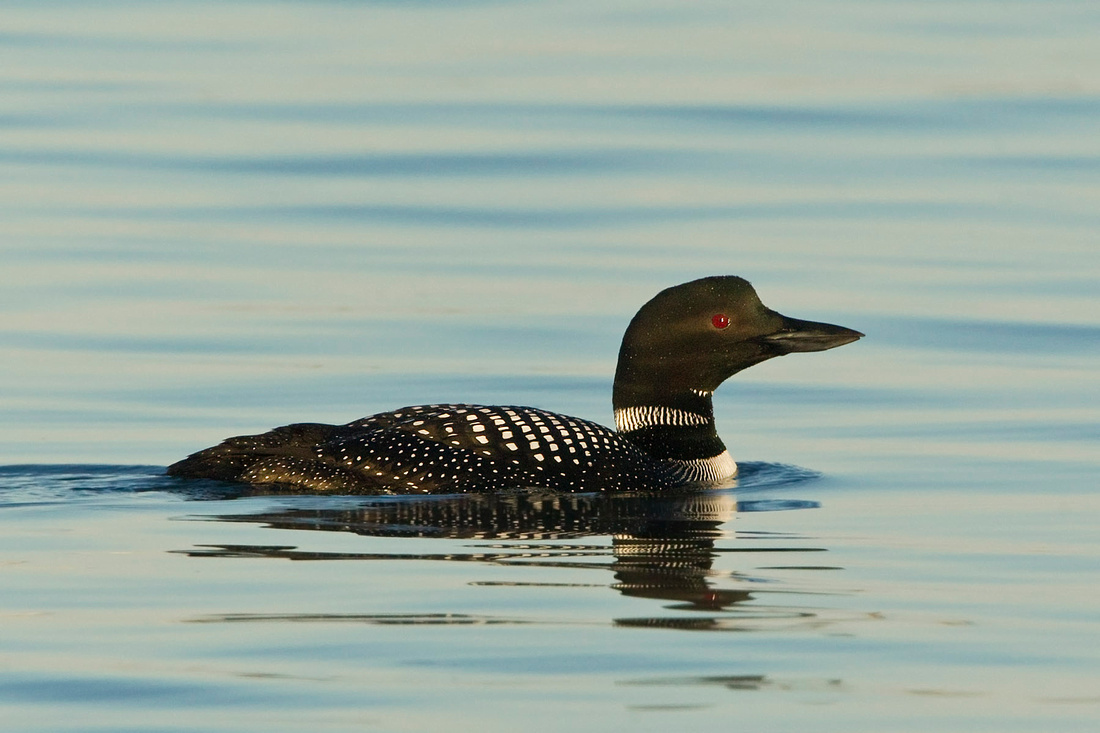

Back to the slowly rising chorus of songs filling the woods. I'm lucky to live in an area where there are quite a few great places to bird in the spring and that's where I usually concentrate my efforts for the month of May. Tracts of Nehantic State Forest in Lyme and East Lyme, Rocky Neck and Devil's Hopyard State Parks and numerous town parks and land trust preserves, especially in Lyme and Salem offer lots of different habitat to cover, and an amazing variety of birds and creatures that live there.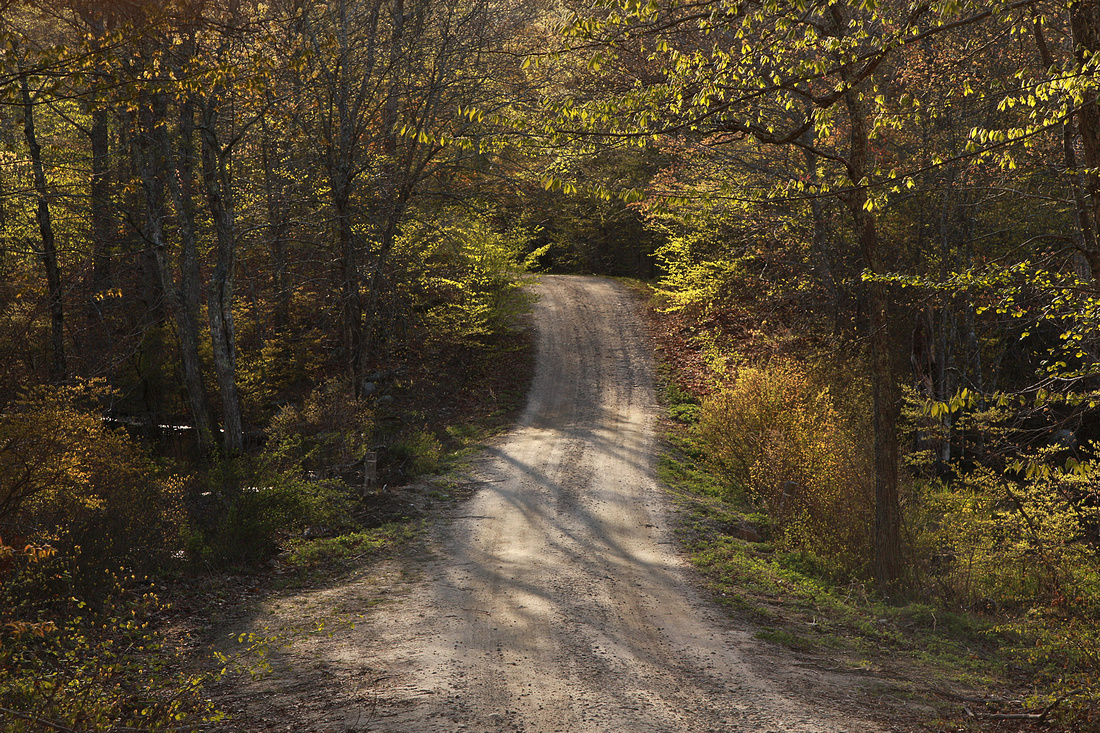

Nehantic State Forest - Lyme
Early arrivals like Blue-gray Gnatcatchers are already building their nests, and are easily spotted almost everywhere. I found two nests so far, thanks to the sparse leaf cover, although the nests are cleverly disguised with lichens that often blend seamlessly with the bark of the tree branches they are attached to. I watched the pair building the nest below, in Lyme, carefully camouflaging the outside with lichens. A couple days later it was nearly twice as high, with the bird barely visible inside.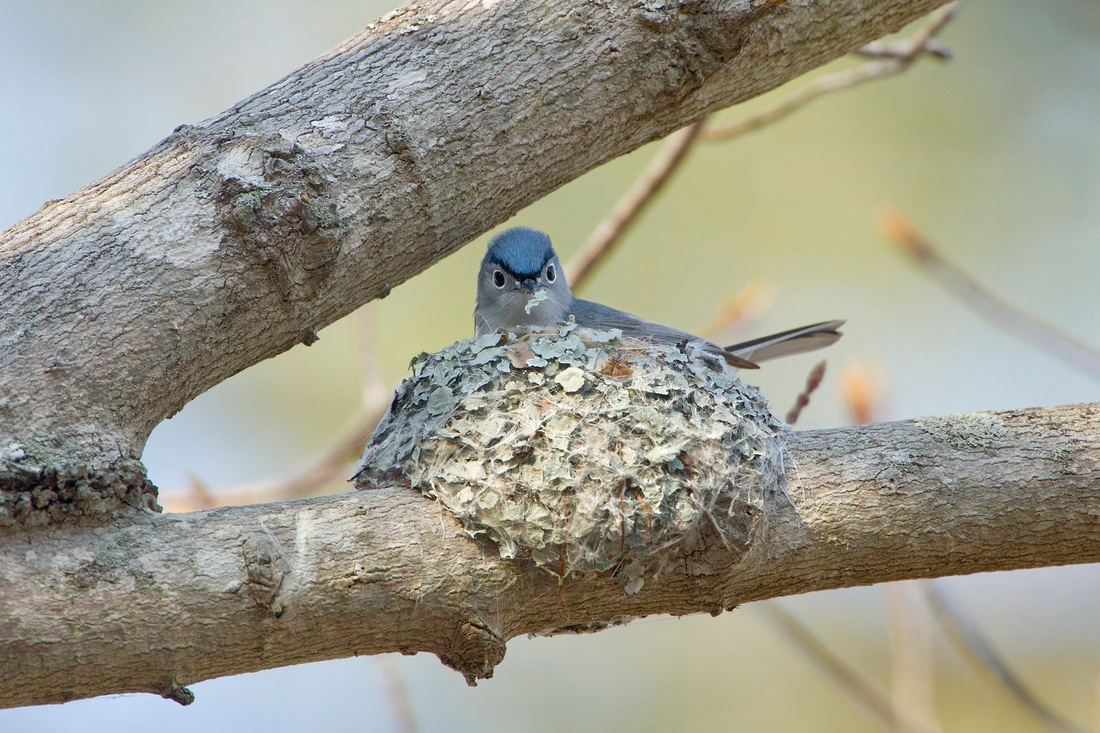

Another easily located bird is the Ovenbird, which sings loudly from the lower forest canopy. In almost every wooded area in Lyme, their piercing "teacher, teacher, teacher" song can be heard every few hundred feet. One of the largest and least colorful of the warblers, Ovenbirds nest on the ground and are fairly easy to see and photograph because they are often found in the lower branches and walking on the ground. 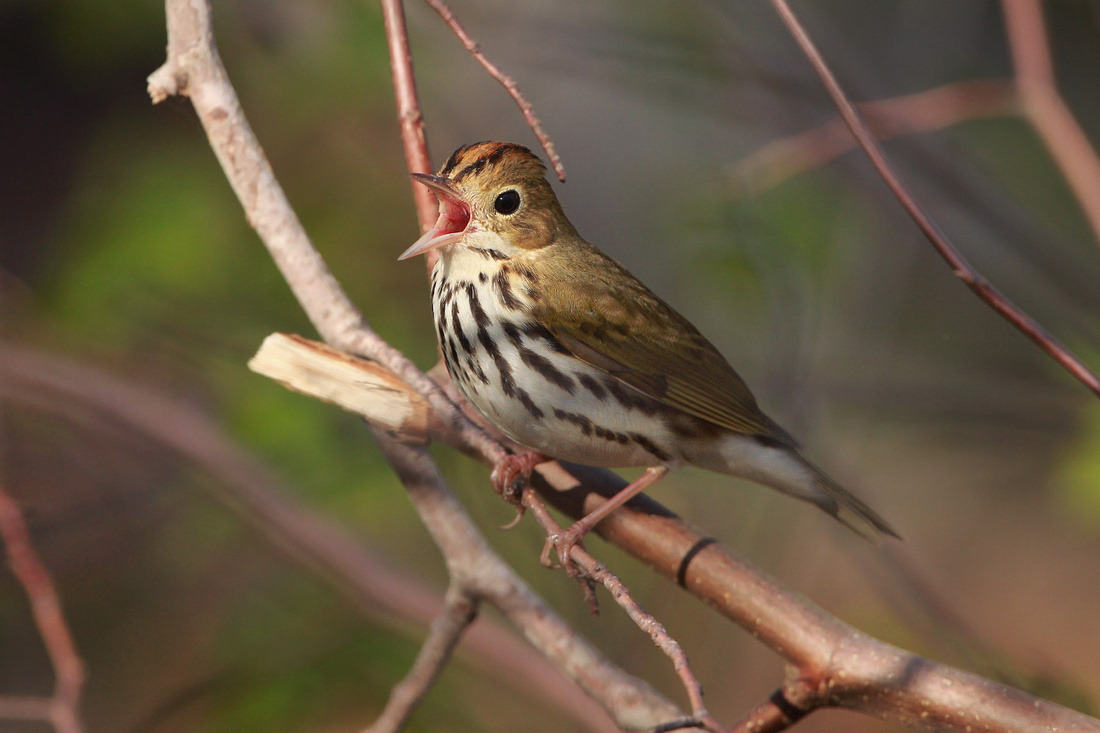

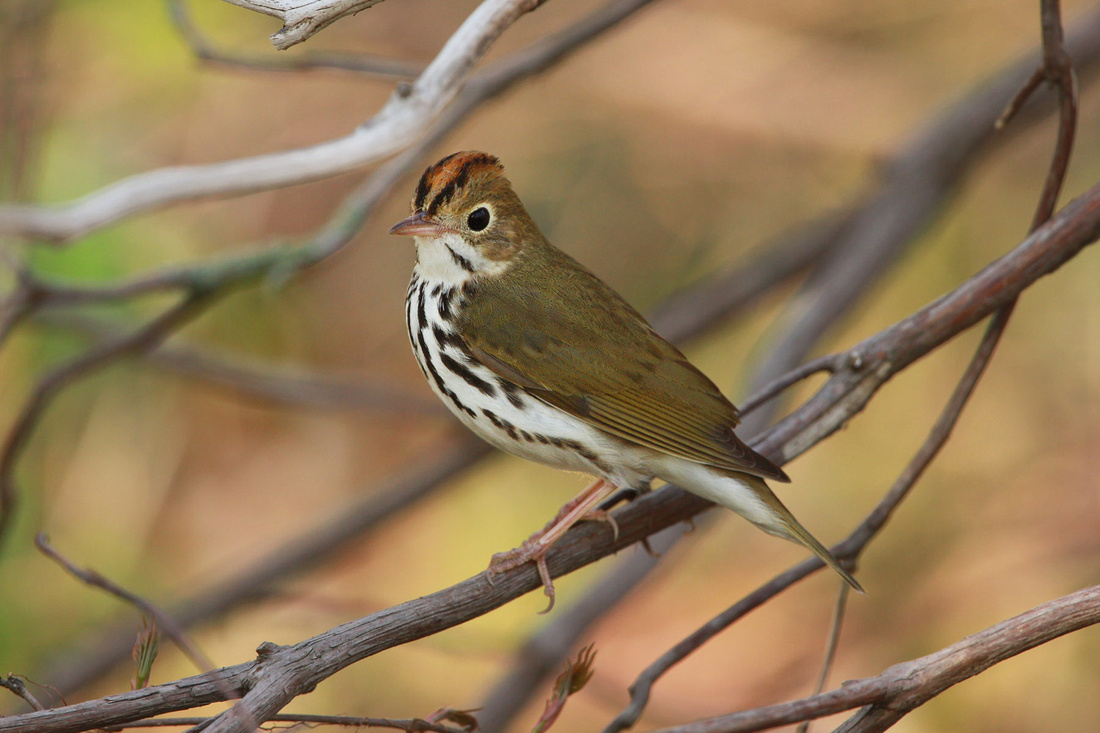

Another low, loud warbler easy to hear but tougher to spot, the Northern Waterthrush sings loudly from wet, swampy areas. They, too lack the bright colors of most warblers and their song has a ventriloquial quality that doesn't easily reveal their location as they walk slowly along the waters edge. The one below was also photographed in Nehantic State Forest.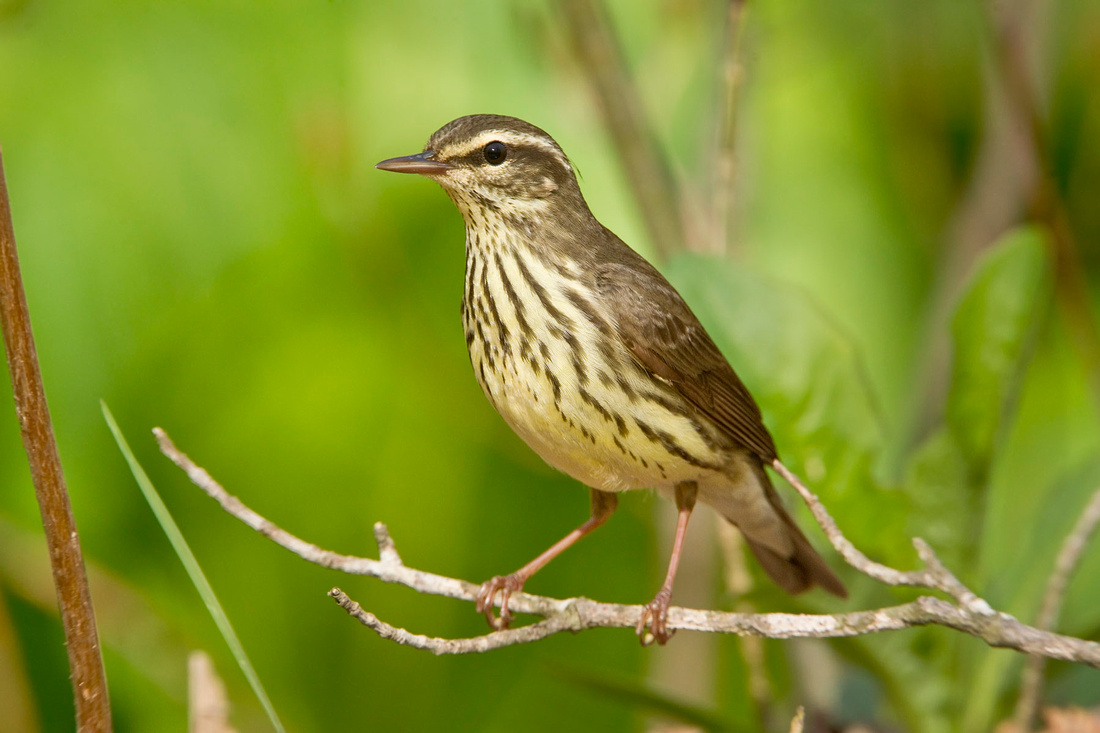

Another prolific singer, usually found near woodland streams is the Winter Wren. A tiny bird with a very long, complex and musical song, they are easy to pick out when singing but are usually found close to their specific habitat, and are not that readily found.

I usually see, or more often hear them when hiking in Devil's Hopyard, and located a territorial pair on a hillside in there, although in a different spot than I have ever seen them before.

Some others from the past week include Worm-eating Warbler.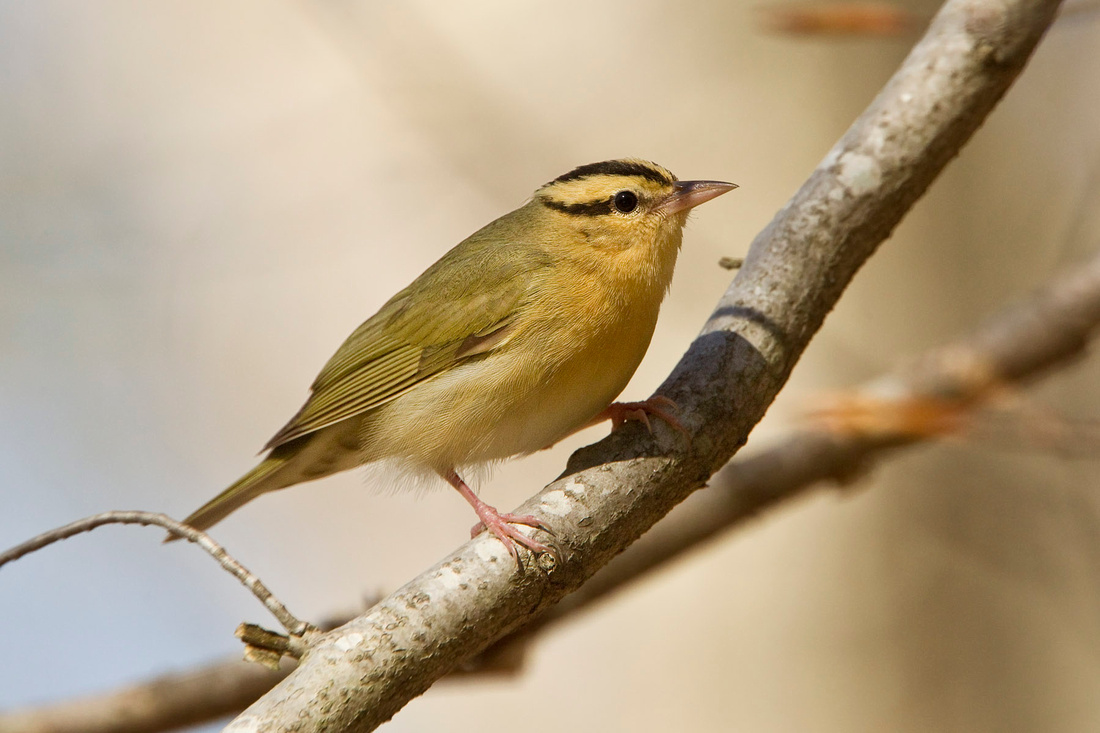
 American Redstart - male,
American Redstart - male,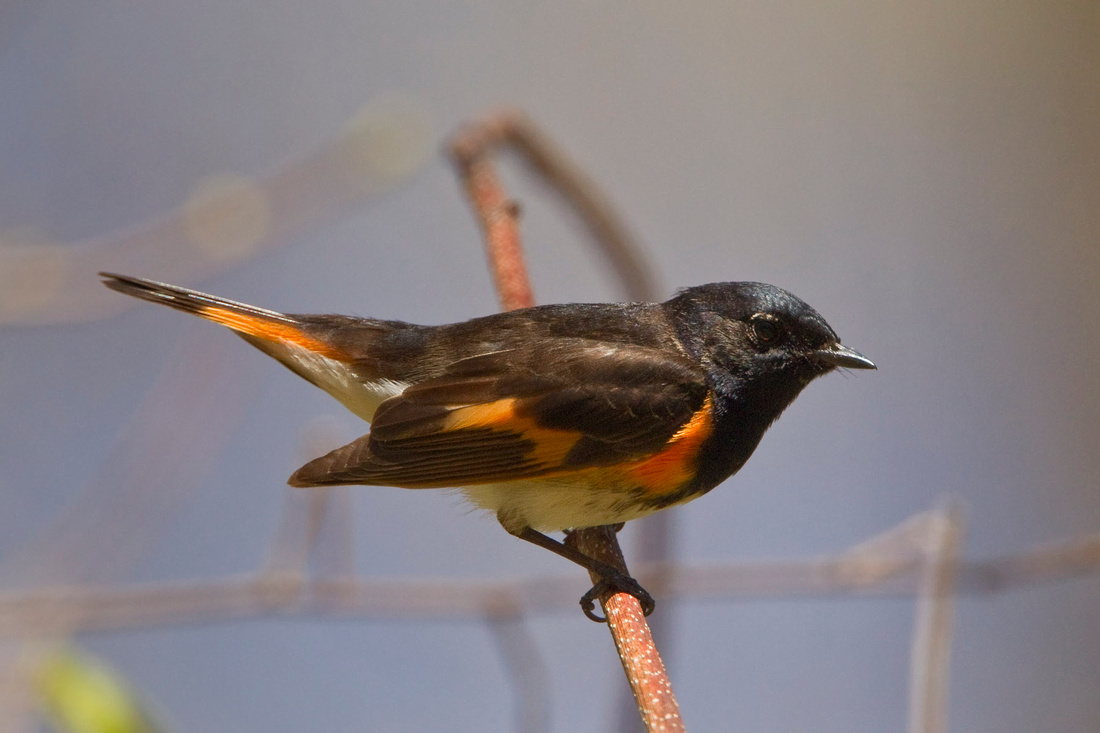

Blue-winged Warbler,
 Wood Thrush,
Wood Thrush,
 and higher up in the trees, a Black-throated Green Warbler,
and higher up in the trees, a Black-throated Green Warbler,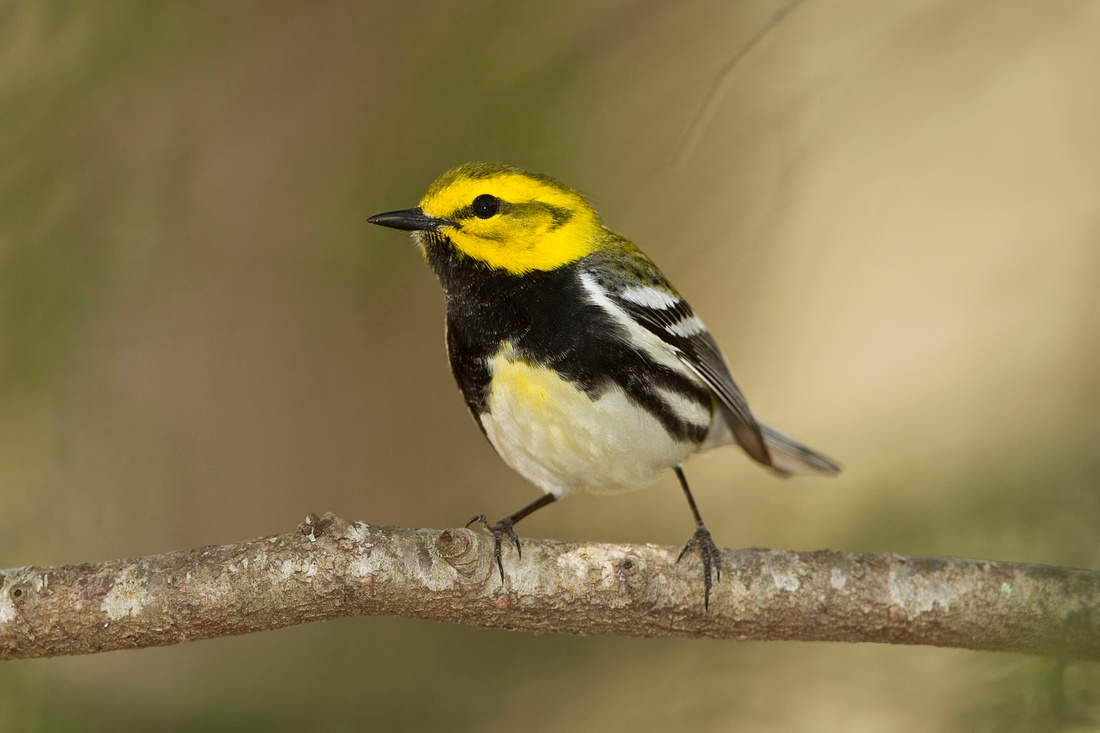
 Cerulean Warbler,
Cerulean Warbler,
 Yellow-throated Vireo,
Yellow-throated Vireo,
 and Broad-winged Hawk.
and Broad-winged Hawk.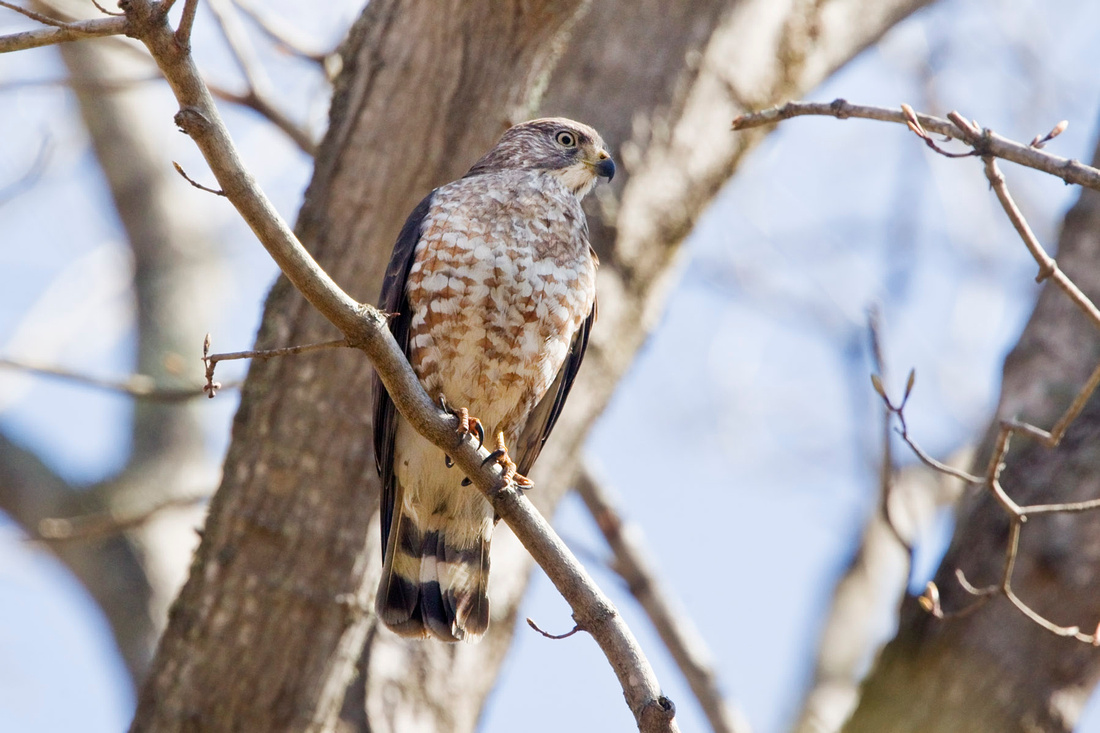
 Not all the activity was in the woods, though. I came a cross a bunch of amazingly tame Barn Swallows that were building nests under a bridge. I slowly walked up to them and photographed them perched on the railings,
Not all the activity was in the woods, though. I came a cross a bunch of amazingly tame Barn Swallows that were building nests under a bridge. I slowly walked up to them and photographed them perched on the railings,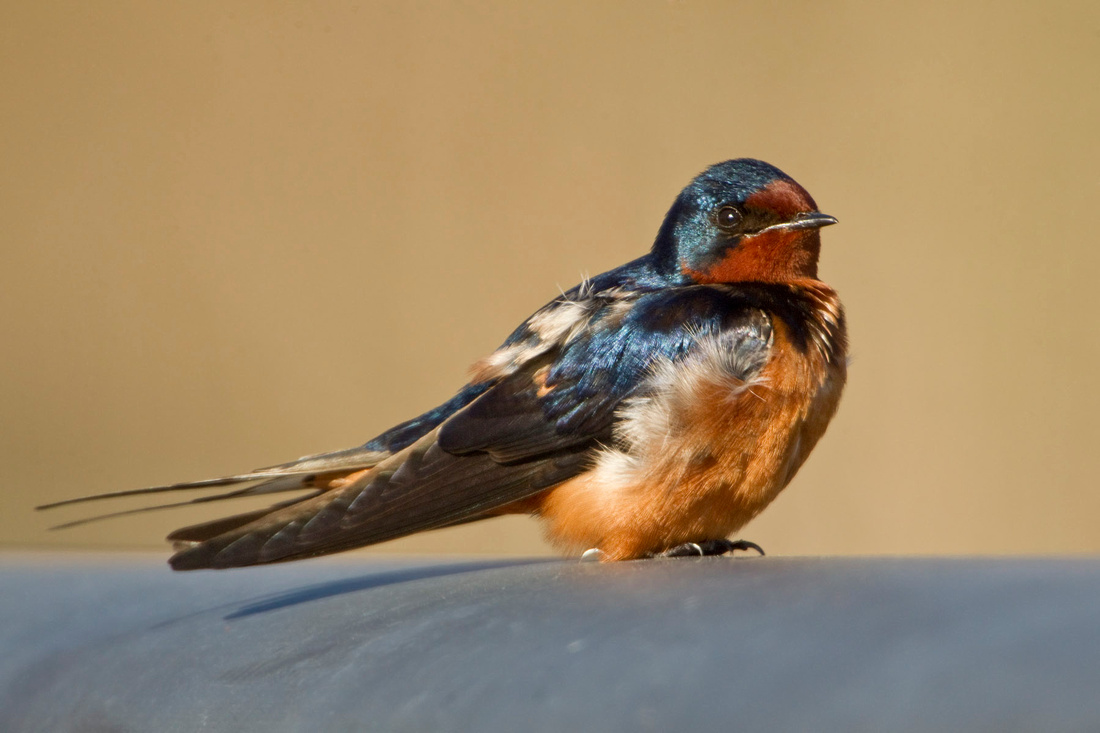
 collecting mud and twigs for their nests,
collecting mud and twigs for their nests,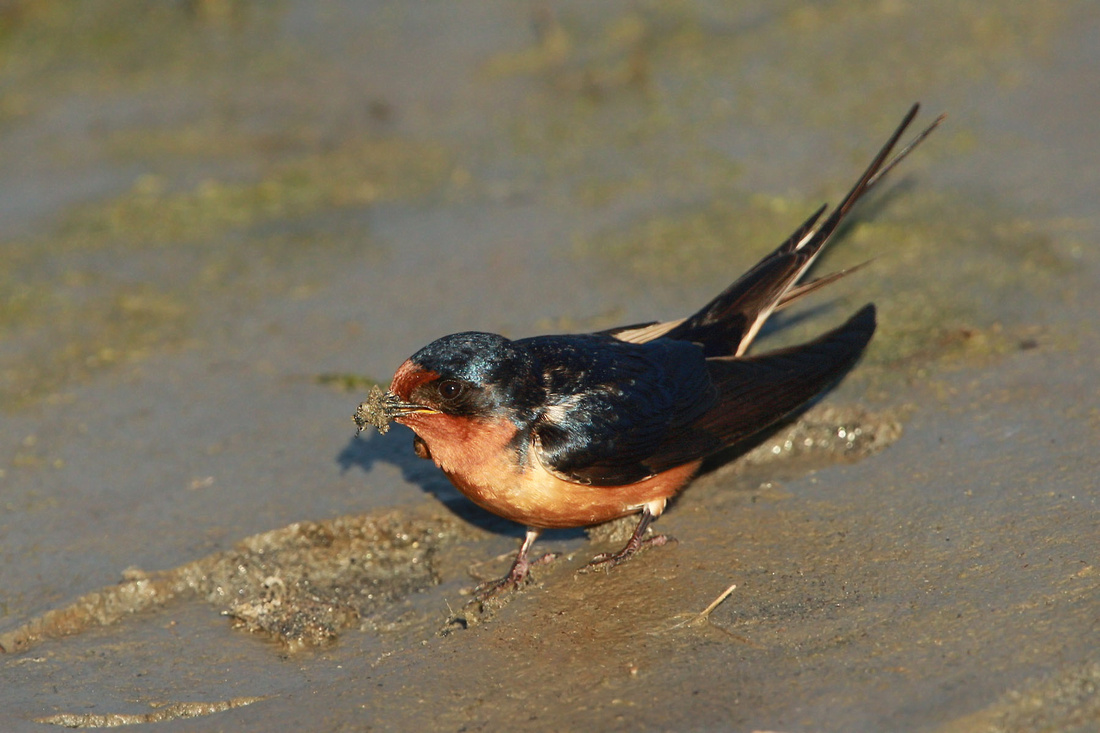

and taking the material to their nests below the bridge,

I tried in vain to get shots of them flying around, at times just a few feet from me, to my immense frustration. My annoyance was overcome when, on a few occasions, one would land fearlessly right next to me. Now that's something to sing about.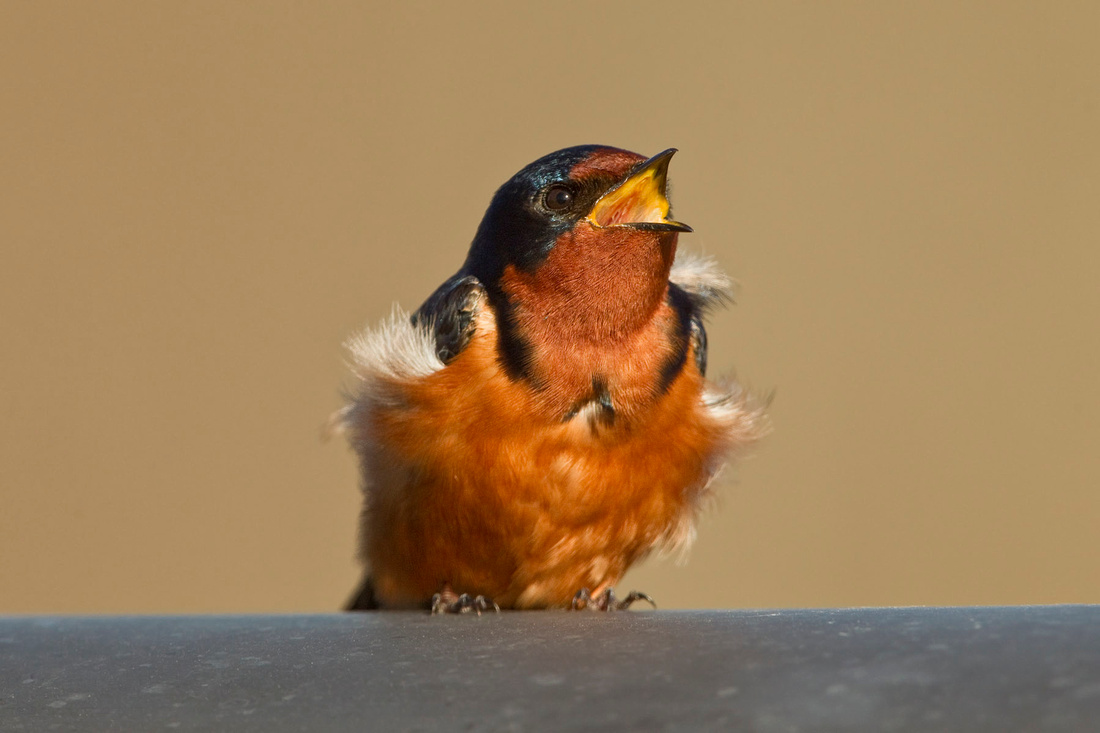

Current total - 172 Connecticut Species.
WEEKS 15 & 16 - A LITTLE PATIENCE REQUIRED
Things have been pretty busy the past two weeks, but it's only a taste of what the next month will bring. The peak of migration is temptingly close, and every day now new arrivals are being reported. But here in eastern Connecticut, particularly in the woodlands, it's still pretty quiet. It always seems that a bit of patience is required here, before the waves of migrants building around the state explode suddenly across the eastern woodlands. This chilly spring seems to be a bit slower getting started than the past couple years as well.
At Rocky Neck, things have quieted down in the Bride Brook marsh. Most of the Osprey have paired up and chosen nest sites. Many of the ducks have moved on, but a few still linger, mainly in the north end of the marsh. I have not seen the two sub-adult eagles lately, although there was a tattered looking juvenile flying over the park last week.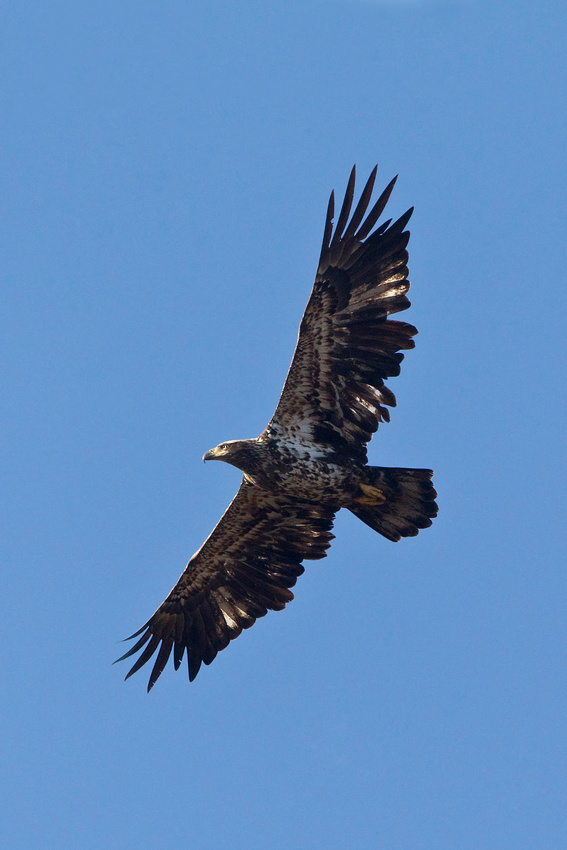

The egrets have also thinned out a bit, although both Great and Snowy Egrets still dot the salt marsh. So far no sign of the Little Blue Heron I've seen the past few springs in the park, but the Snowies are starting to morph into full breeding plumage.

Double-crested Cormorants continue to build along the shoreline, and large flocks can be seen flying overhead well inland as they head north.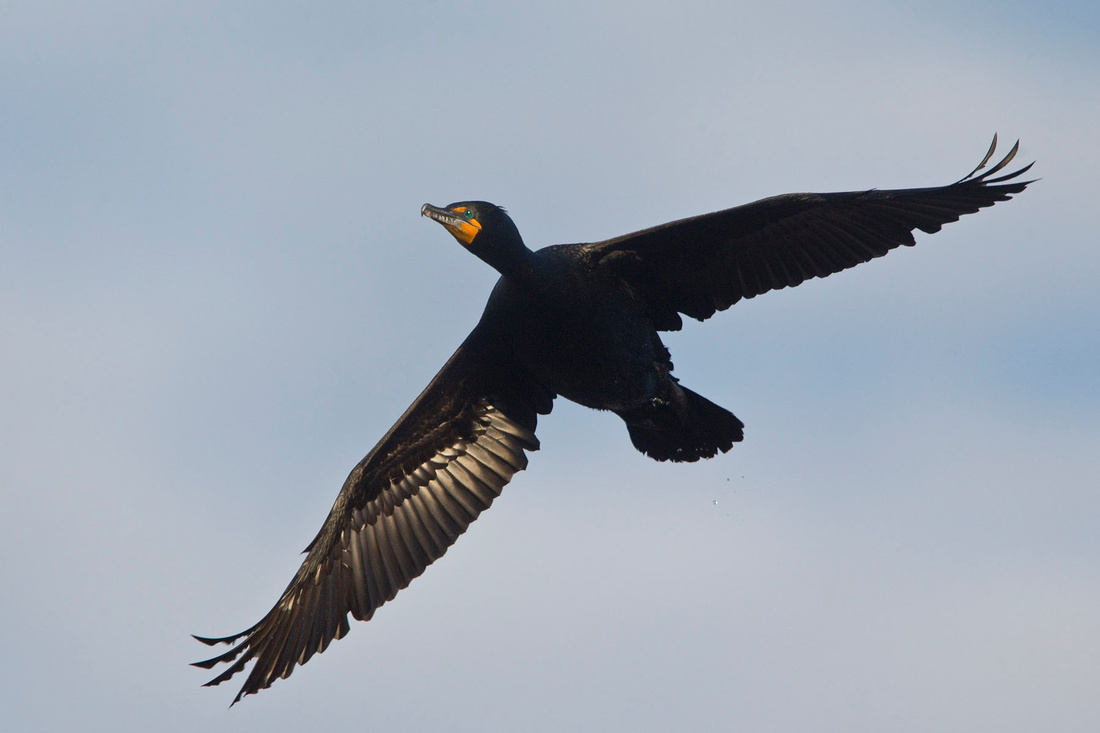
 In many of the ponds in Niantic, flocks of cormorants gather to feed on the alewives that have made it to their spawning destinations. I spent an hour one day, patiently waiting for one to surface close enough to see the tiny crests on the head that they are named for.
In many of the ponds in Niantic, flocks of cormorants gather to feed on the alewives that have made it to their spawning destinations. I spent an hour one day, patiently waiting for one to surface close enough to see the tiny crests on the head that they are named for.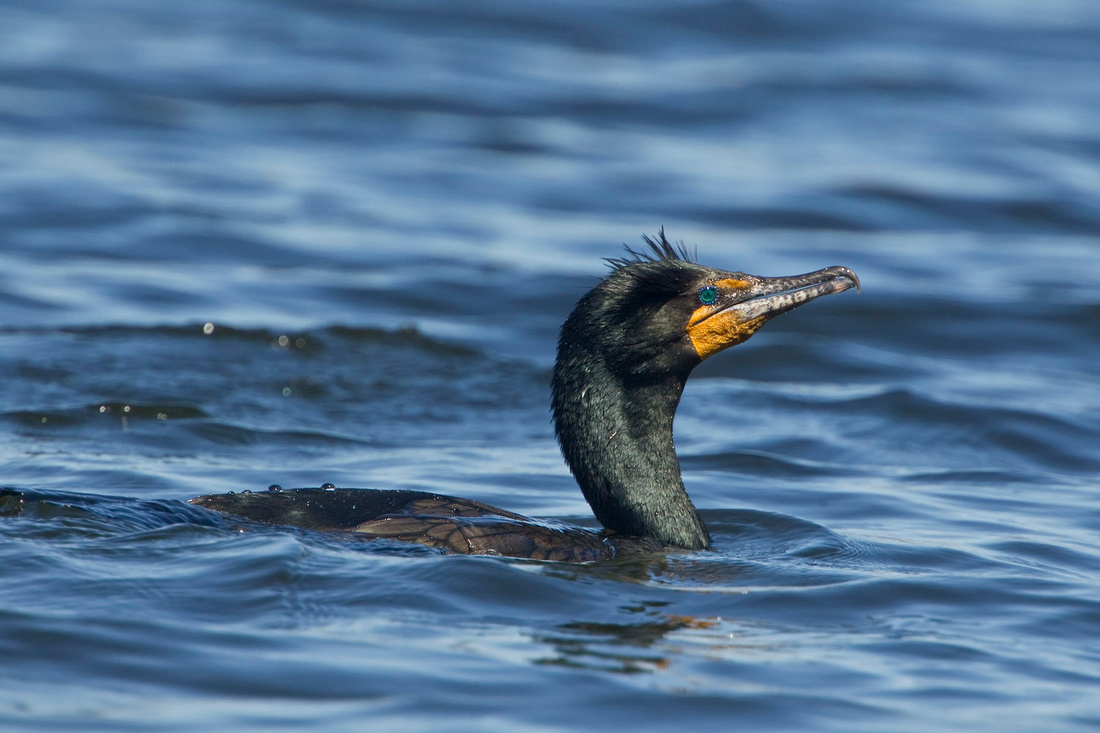
 A few more shorebirds have arrived in coastal locations. The early nesting Killdeer are already on eggs, and seem to fly up from the strangest locations where they have chosen to nest (like the middle of a gravel parking lot), to distract innocent passers-by away.
A few more shorebirds have arrived in coastal locations. The early nesting Killdeer are already on eggs, and seem to fly up from the strangest locations where they have chosen to nest (like the middle of a gravel parking lot), to distract innocent passers-by away.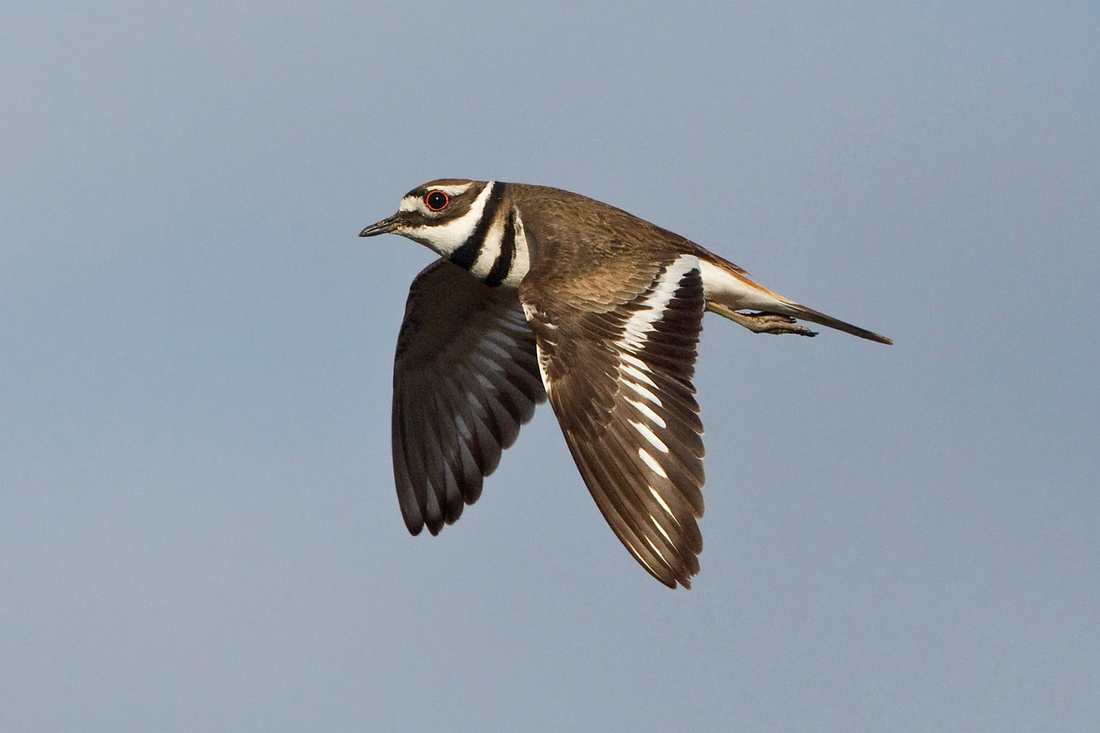
 Noisy Willets have returned to marshes along the East River in Guilford, at Hammonasset, in Madison and Great Island in Old Lyme. Lesser Yellowlegs (pictured below) have joined their larger cousins both at Rocky Neck and Hammonasset.
Noisy Willets have returned to marshes along the East River in Guilford, at Hammonasset, in Madison and Great Island in Old Lyme. Lesser Yellowlegs (pictured below) have joined their larger cousins both at Rocky Neck and Hammonasset.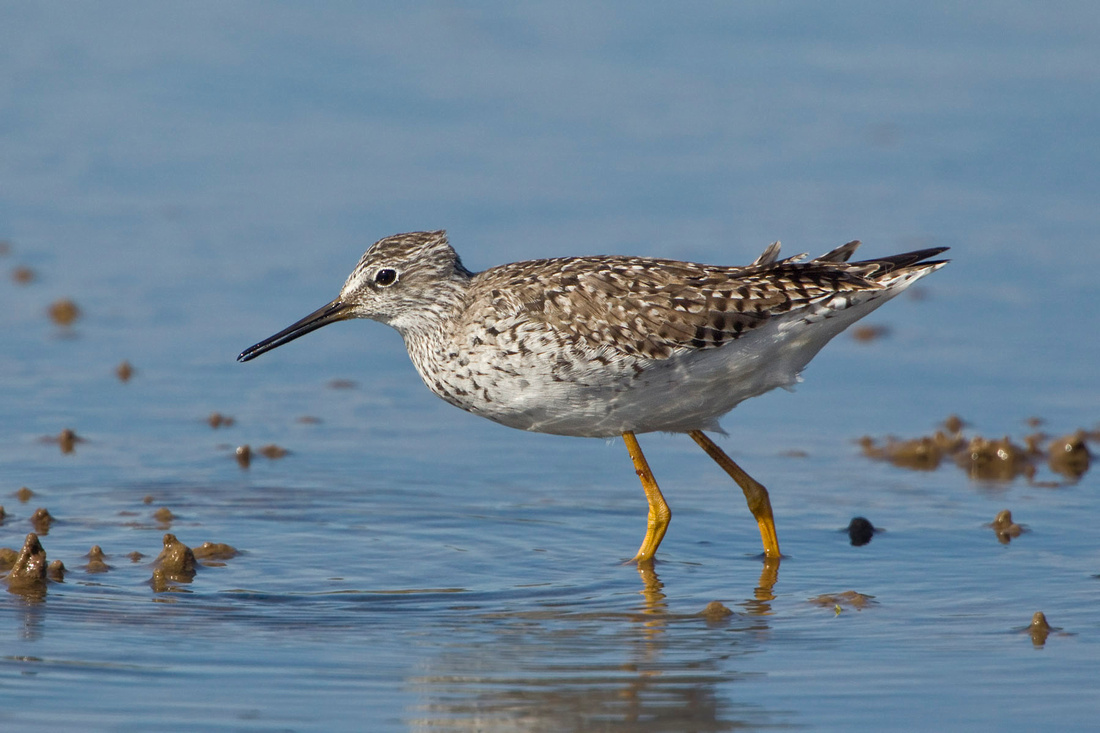

Also at Hammonasset last week, I spent a morning on a wild bittern chase, waiting a couple hours to see an American Bittern that had been seen repeatedly in a small creek area across from the Nature Center. I couldn't locate it at first, but after getting tips from a couple different birders, I did get a brief look at it as it walked across a small pond before disappearing again into the reeds. Another photographer joined me and we spent a while talking, hoping it might pop into the open again. I was about to give up the quest, when we decided to walk back toward the creek to see if it had stealthed it's way back there. I trained my binoculars down the length of the creek but did not see it. Luckily my friend, sans binoculars, took the wider view and found it frozen at the edge of the creek, just a few feet below us. Scrambling to take off my teleconverter and back up a little, I was able to get some shots of it as it hunted and caught a fish. Again, a bit of patience was rewarded.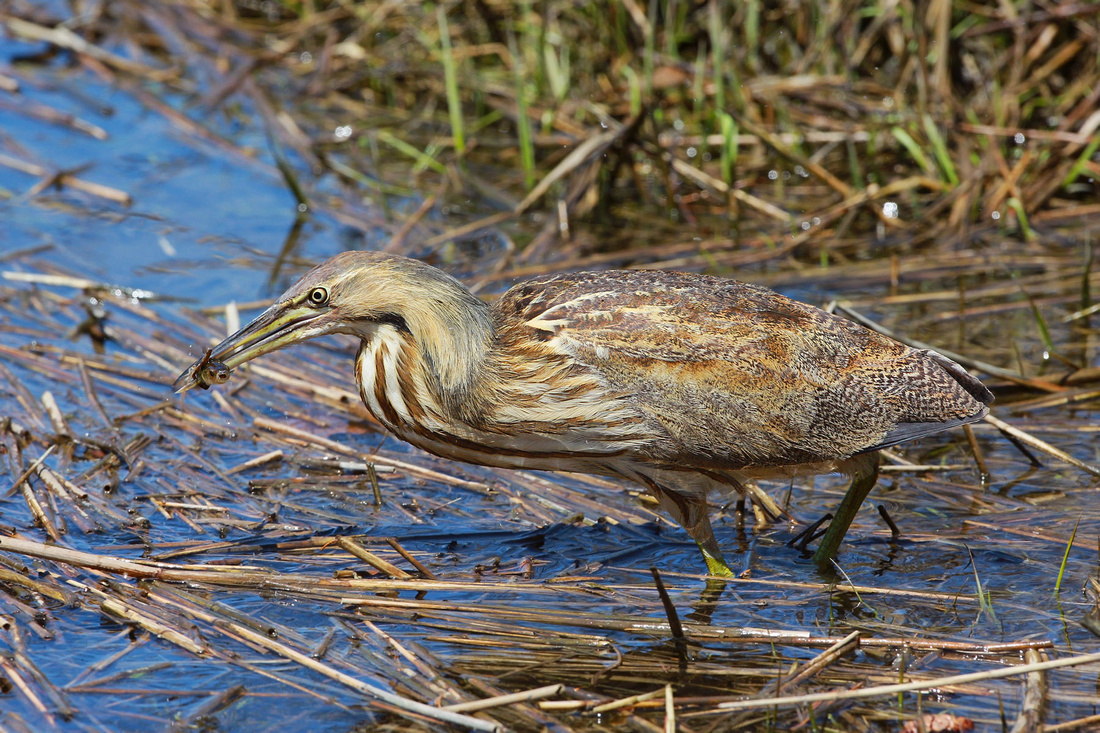

While taking a break from the bittern exercise, I took a detour to see the Purple Martins (top) and Tree Swallows (below) setting up shop near the Nature Center.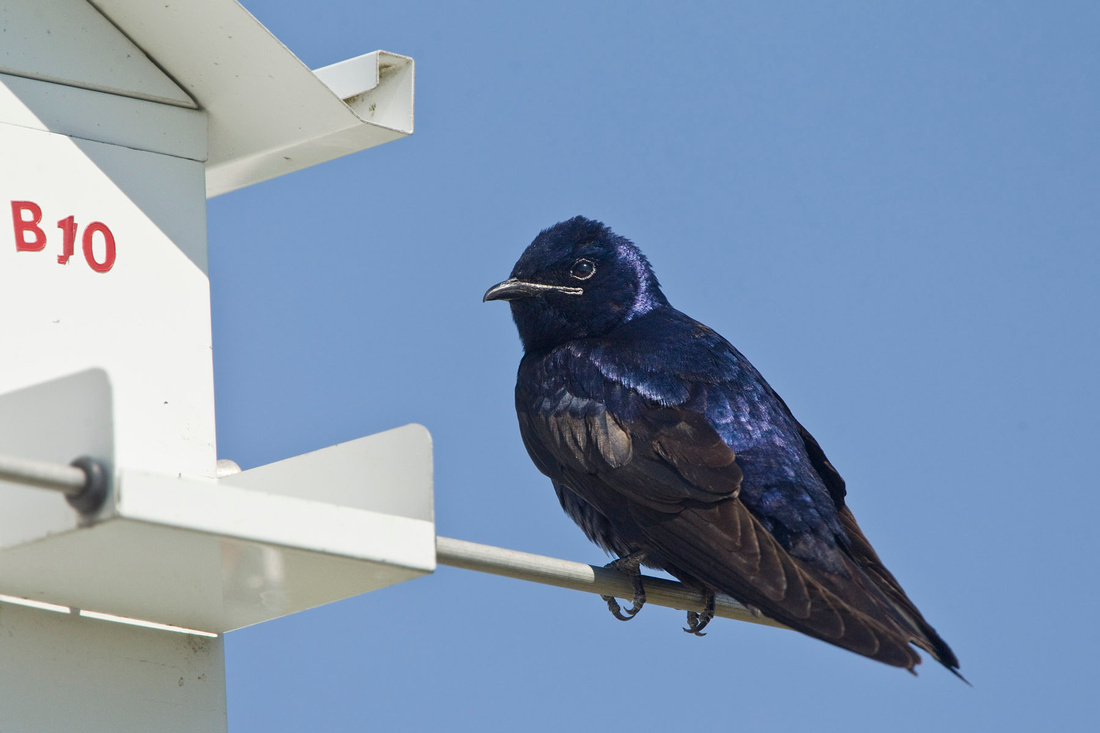

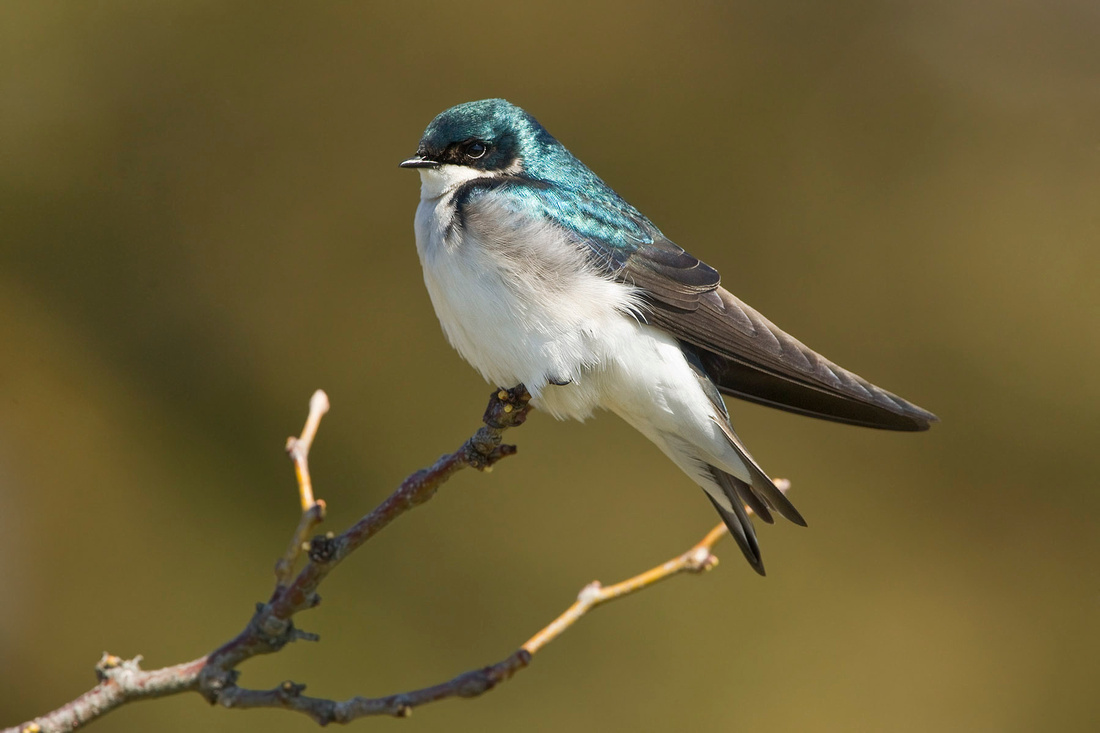
 My main focus has been on migrant songbirds and I took several walks and drives through my favorite wooded spots in Lyme and East Haddam to look for warblers and other migrants that may have arrived. Towhees were the most often heard but seldom seen, except for the omnipresent Chipping Sparrow which could be seen and heard almost everywhere.
My main focus has been on migrant songbirds and I took several walks and drives through my favorite wooded spots in Lyme and East Haddam to look for warblers and other migrants that may have arrived. Towhees were the most often heard but seldom seen, except for the omnipresent Chipping Sparrow which could be seen and heard almost everywhere.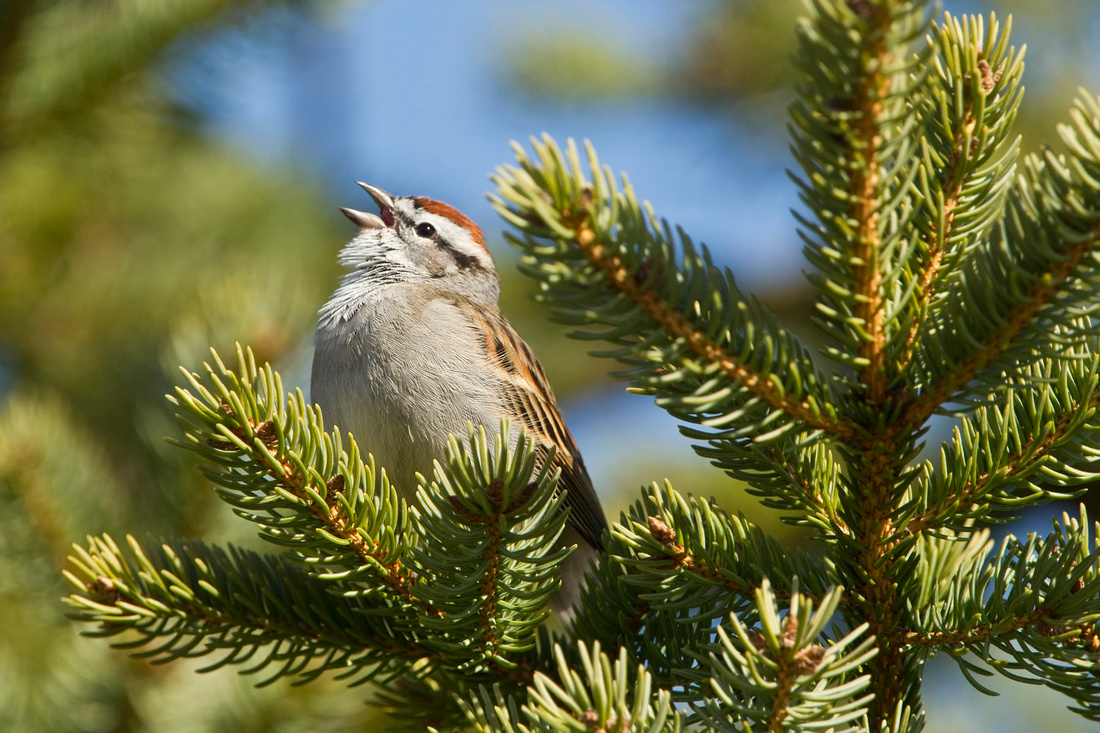

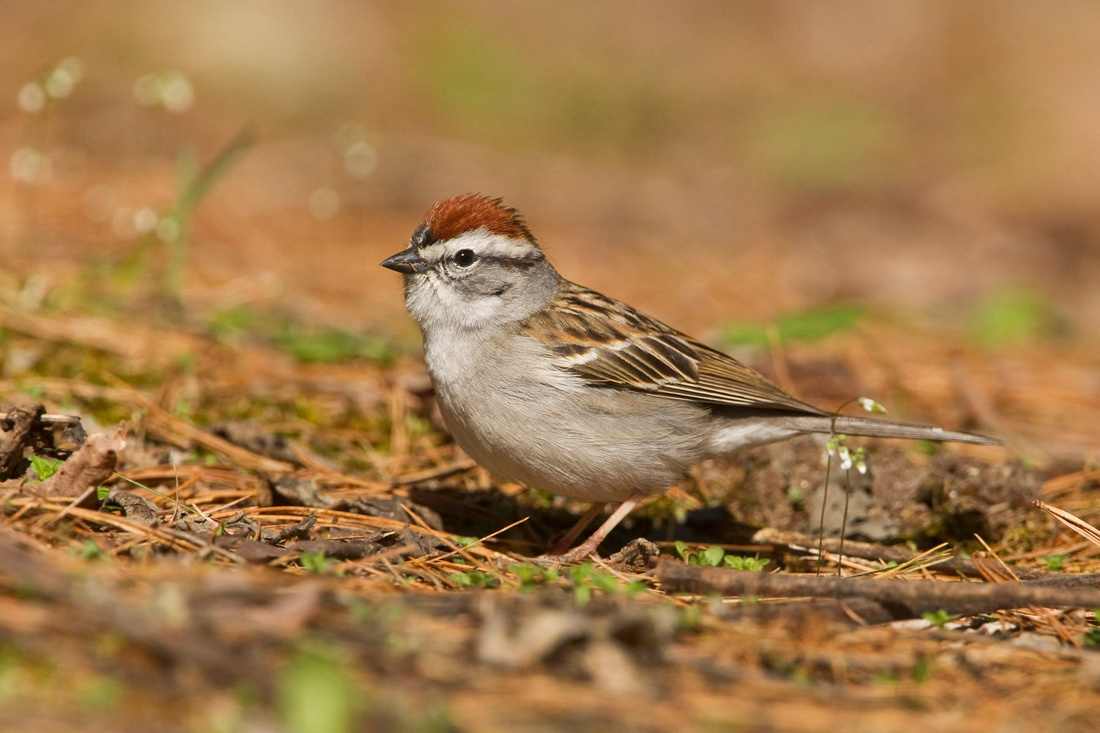
 In a few locations, a more musical version of the rapid fire Chipping Sparrow song signaled the presence of a Pine Warbler, one of the earliest arriving migrant warblers.
In a few locations, a more musical version of the rapid fire Chipping Sparrow song signaled the presence of a Pine Warbler, one of the earliest arriving migrant warblers.
 In some locations, I found a few small pockets of warblers, including Yellow-rumped (the first this year as they have been unusually scarce this winter), Palm, a lone Ovenbird, Cerulean, Northern Parula and Blue-winged all foraging quietly, and a couple Louisiana Waterthrush singing sporadically. Blue-gray Gnatcatchers were numerous, but overall the woods were still frustratingly quiet. Again, I'll have to be patient, as eventually the woods will come alive with their songs.
In some locations, I found a few small pockets of warblers, including Yellow-rumped (the first this year as they have been unusually scarce this winter), Palm, a lone Ovenbird, Cerulean, Northern Parula and Blue-winged all foraging quietly, and a couple Louisiana Waterthrush singing sporadically. Blue-gray Gnatcatchers were numerous, but overall the woods were still frustratingly quiet. Again, I'll have to be patient, as eventually the woods will come alive with their songs.
Since the wave of migrant songbirds hasn't hit my home turf yet, I shifted focus and tried to work on some of the wintering seabirds that would soon be departing. At Hole-in-the-Wall Beach in Niantic, a few Horned Grebes remained, some nearing full breeding plumage. I draw some strange looks from beach goers, lying prone of the breakwater rocks waiting for birds to surface close by. Again, patience required. None of the grebes were bold enough to approach too close to shore but this nice looking one came the closest.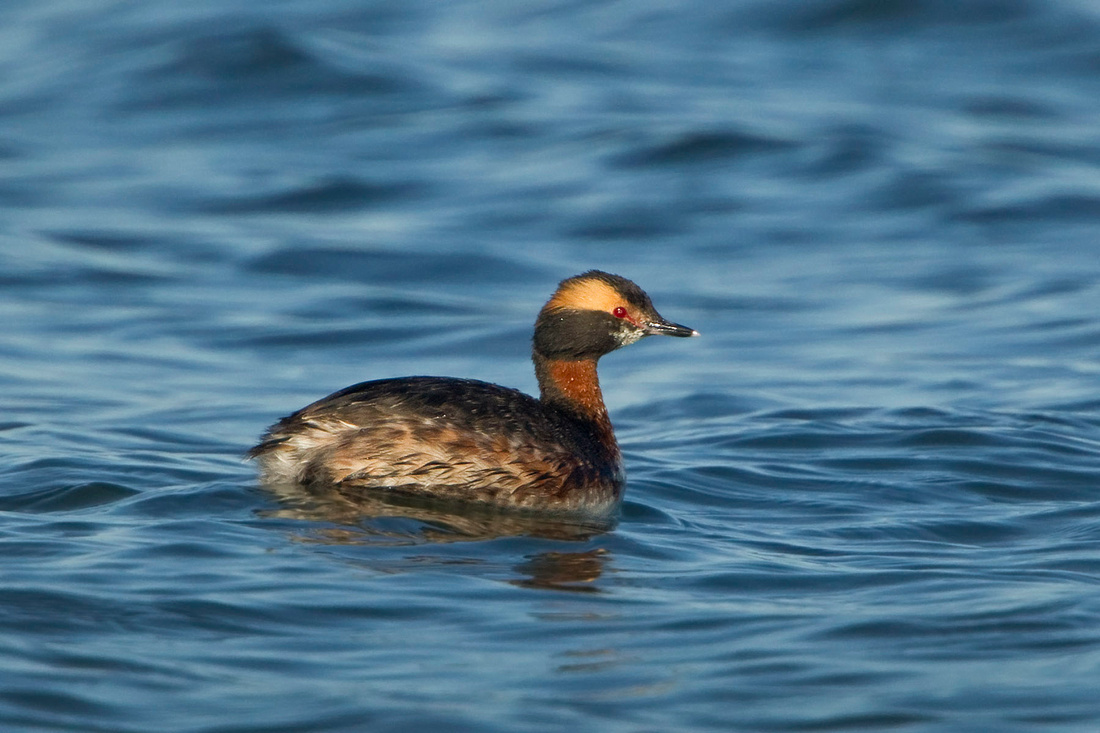

A few Red-breasted Mergansers also lingered, with the females showing the less dramatic, but more recent transformation into breeding plumage (a black ring around their eyes).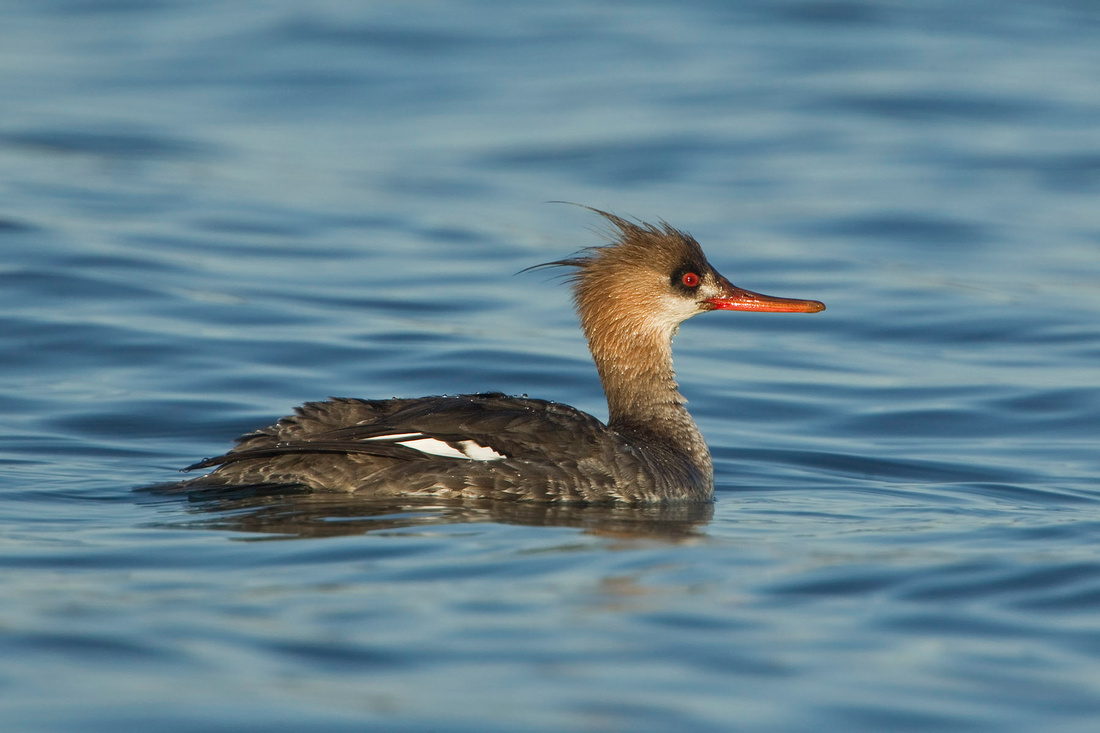

The most dramatic transformation goes to the Common Loon, which turns from drab winter gray to striking black and white and irridescent green. I found that one loon would make a few passes close to shore in the afternoon diving for crabs. The pictures were taken over the last two weeks and show some the final phase of this dramatic transformation. 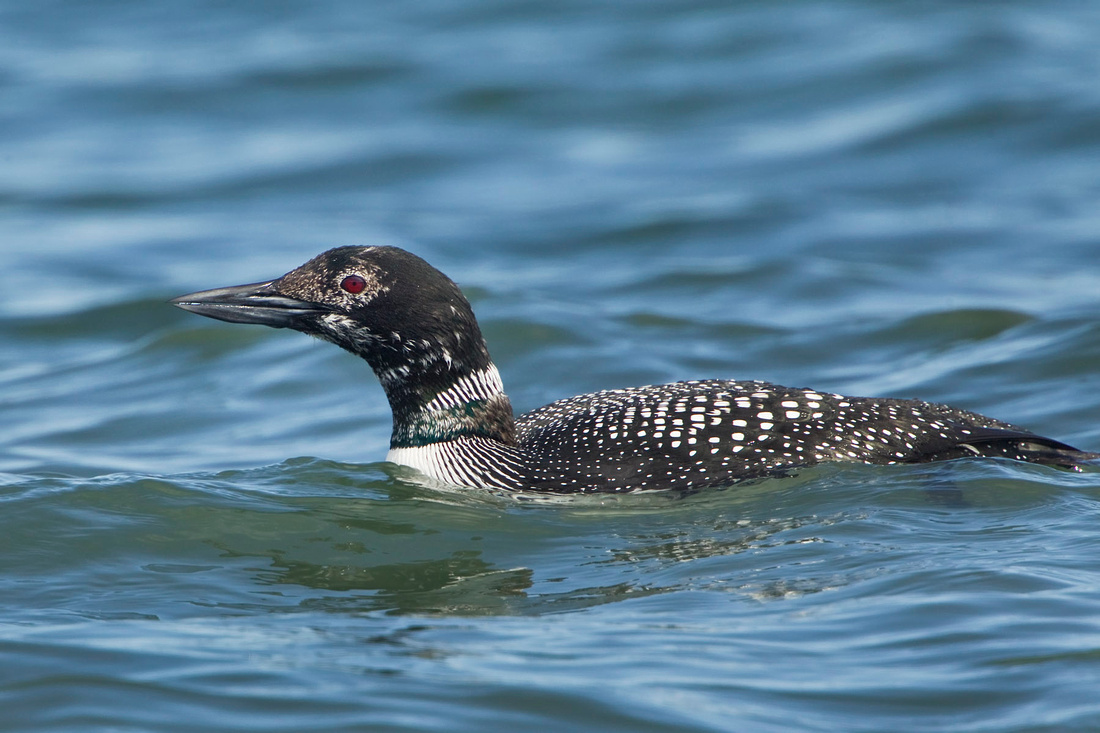

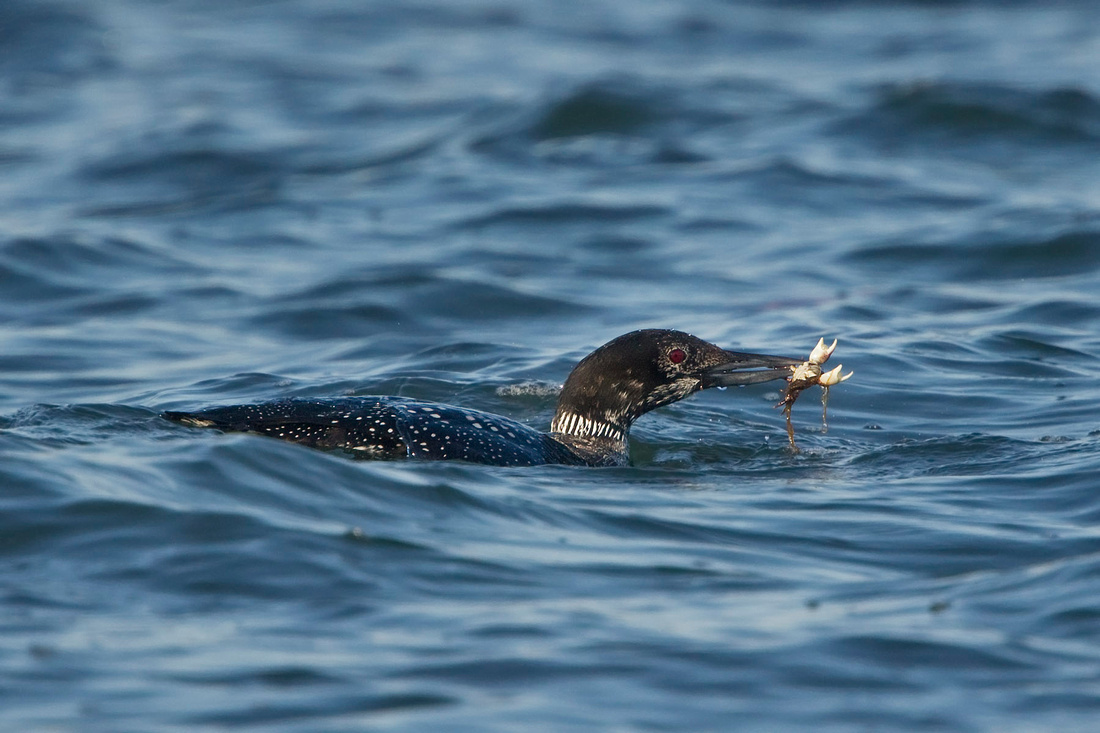

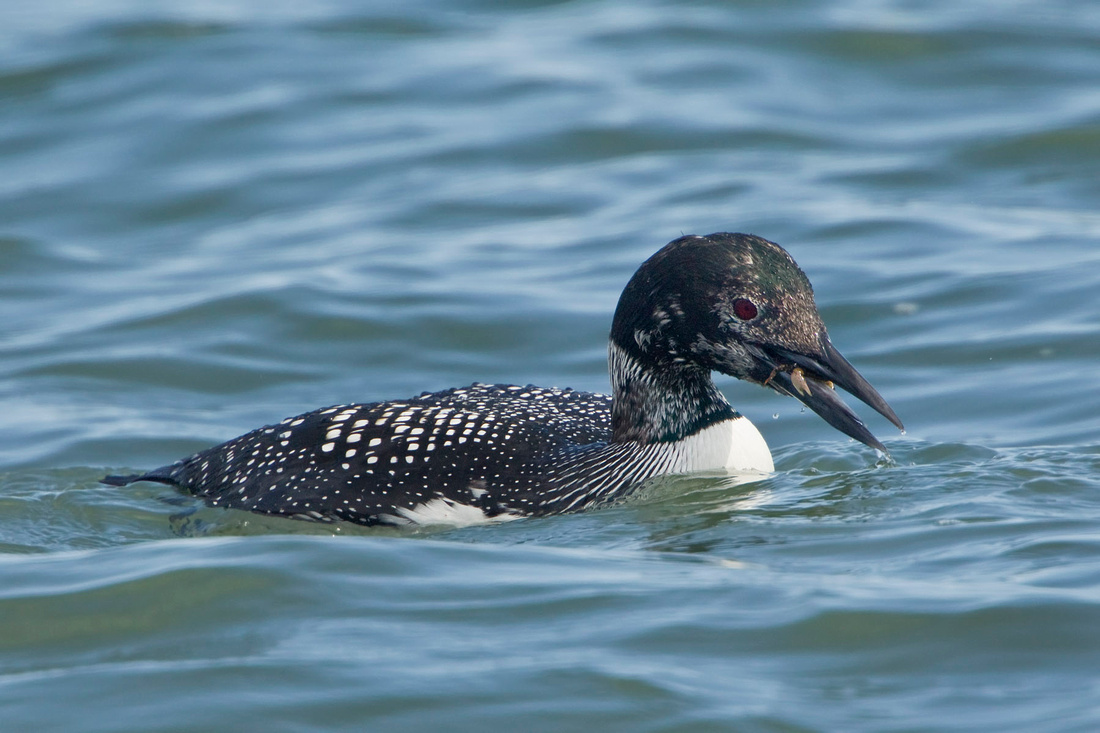




 I often assign myself specific subjects to work on each year, and sometimes I do not get around to it. Many years I've vowed to work on Common Loons in breeding plumage (one of the most beautiful birds in my opinion) but have never gotten to it. This is especially troubling since they are the closest of the loon species to reach, breeding in northern New England, yet I have many more photos of Pacific and Red-throated Loons which breed near the arctic. This year, they are again one of my targets, and hopefully I'll break through finally.
I often assign myself specific subjects to work on each year, and sometimes I do not get around to it. Many years I've vowed to work on Common Loons in breeding plumage (one of the most beautiful birds in my opinion) but have never gotten to it. This is especially troubling since they are the closest of the loon species to reach, breeding in northern New England, yet I have many more photos of Pacific and Red-throated Loons which breed near the arctic. This year, they are again one of my targets, and hopefully I'll break through finally.
As for my Big Year, I'm up to 150 species of birds in Connecticut, and that should starts growing in leaps and bounds in the next few weeks. I'll need to see just about every expected migrant and breeding bird species in the state, and still get lucky with some rarities if I'm going to reach 300 though.
WEEK 14 - THE LOCAL PATCH
I wrote in an earlier post that I don't usually chase birds and other subjects all over the state, or beyond. While I occasionally take a trip to photograph a specific subject, most of my sightings and pictures are made within 15 or 20 miles of my home. I have a number of areas close by, birders call them patches, that I check as frequently as I can. By visiting an area regularly, I'm able to get a better sense of what goes on there, the seasonal changes, patterns and behavior the inhabitants and the timing of the activity. This helps me know where and what to look for and anticipate things I want to get pictures of. Of all the factors that I've found to improve my photo opportunities over the years, I think building reservoir of knowledge from observation and experience is the most important.
Of course not everything in nature is entirely predictable. By repeatedly visiting the same spots, I occasionally find that one of my regular patches gets really active, and turns into a hotspot. When that happens, I try to concentrate on that one area to take advantage of all the activity. To use a sports analogy, it's like riding the hot hand.
Rocky Neck State Park is only a couple miles from my home, and is one of the patches I frequent, but it's usually not one of my favorite or most productive spots. At most times of the year, there are other areas nearby that I spend a lot more time at, but the exception is in early April. At this time of year, Rocky Neck is a hotspot of activity. Osprey return to the area and begin their nesting routine and a variety of ducks stage in the marsh before their migration north. The marsh is also teeming with gulls, egrets, herons, Glossy Ibis and Double-crested Cormorants. Every year at this time I visit the the park often to photographing them, and this year is no different. 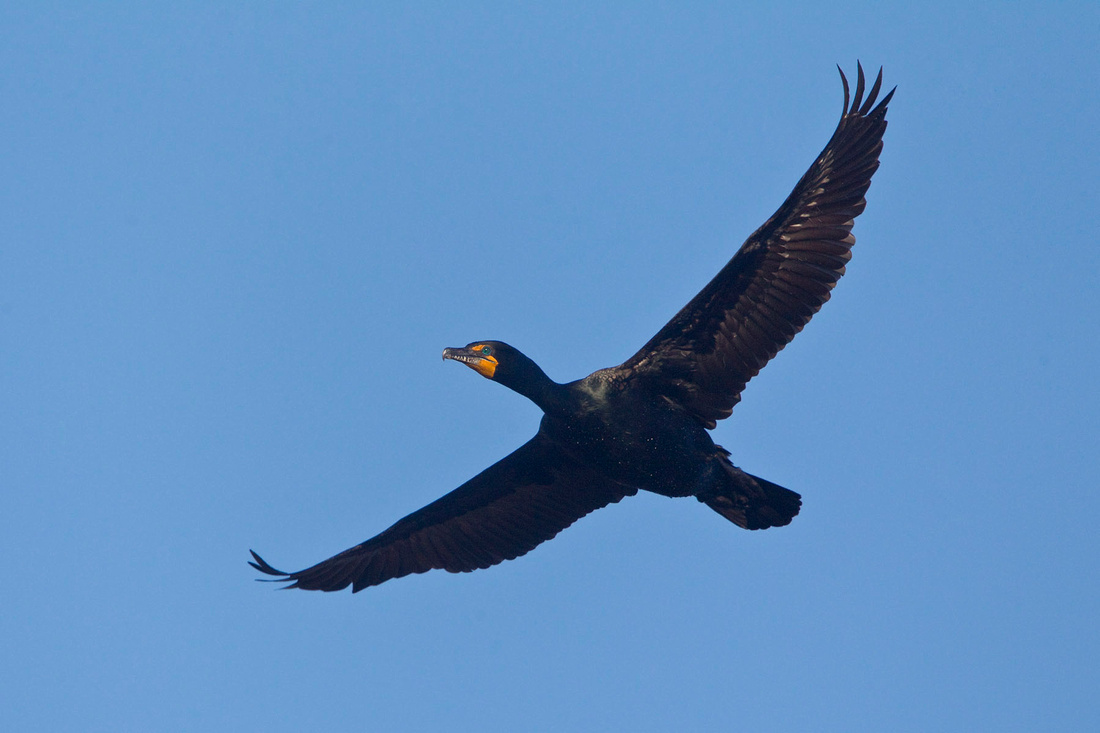
 The cormorants are one of my favorites, as they gather in the marsh to fish, and collect sticks for their sparse nests. Not the most agile birds in flight, it takes them some time to gain altitude, and they often fly out of the marsh at a very low height. I like to wait at the spots they fly out of and photograph them as they wing past, often carrying a single tiny twig for their nests on the rocky offshore islands. One day this past week, I heard a crashing sound in the trees and turned to see a cormorant that had struck a tree top, and tumbled all the way down through the branches, before hitting the ground. None the worse for its ordeal, it shook itself off and flew back out into the marsh.
The cormorants are one of my favorites, as they gather in the marsh to fish, and collect sticks for their sparse nests. Not the most agile birds in flight, it takes them some time to gain altitude, and they often fly out of the marsh at a very low height. I like to wait at the spots they fly out of and photograph them as they wing past, often carrying a single tiny twig for their nests on the rocky offshore islands. One day this past week, I heard a crashing sound in the trees and turned to see a cormorant that had struck a tree top, and tumbled all the way down through the branches, before hitting the ground. None the worse for its ordeal, it shook itself off and flew back out into the marsh.
Egrets abound in the salt marsh, gathering to hunt fish in the shallow tidal pools. Snowy Egrets, as part of their breeding rituals, emit rude, guttural squawks every time the fly from one puddle to the next, belying their graceful motions and elegantly plumed appearance. Great Egrets, less noisy than the than their smaller relatives, show off their own fine plumes and the lime green lores of their breeding plumage. The Snowies are still a bit behind developing their vivid red lores. 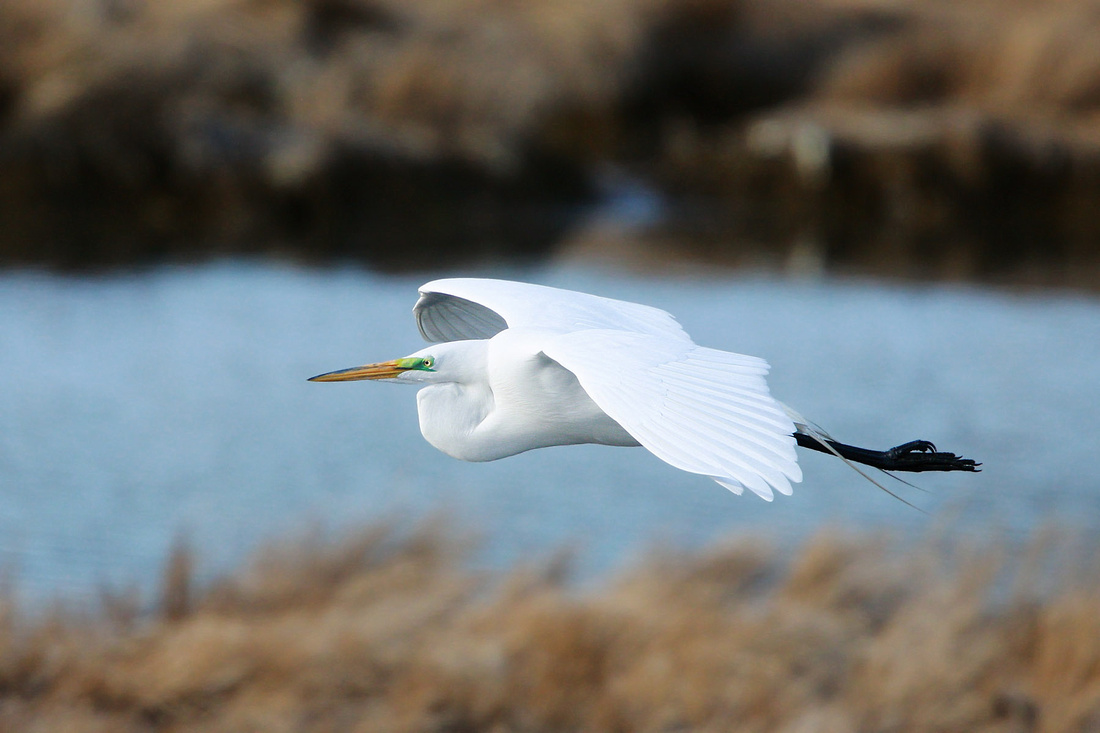


 The most exciting thing to photograph is the Osprey activity as they fish and set up their nests. Osprey time their arrival here with that of the river herring, particularly Alewives, which return from the ocean each spring, heading up into rivers, streams and eventually into ponds where they spawn. The Bride Brook, which runs through Rocky Neck has one the healthiest herring runs remaining in Connecticut, where they have suffered a decades-long decline. Every spring Osprey follow the thick schools of herring as they make their way up into the brook and surrounding salt marsh. This years there seemed to be more Osprey fishing in the marsh than I can remember. I was able to count 12 Osprey in the marsh at one time, including three birds jockeying for position over one small pool in search of the fish.
The most exciting thing to photograph is the Osprey activity as they fish and set up their nests. Osprey time their arrival here with that of the river herring, particularly Alewives, which return from the ocean each spring, heading up into rivers, streams and eventually into ponds where they spawn. The Bride Brook, which runs through Rocky Neck has one the healthiest herring runs remaining in Connecticut, where they have suffered a decades-long decline. Every spring Osprey follow the thick schools of herring as they make their way up into the brook and surrounding salt marsh. This years there seemed to be more Osprey fishing in the marsh than I can remember. I was able to count 12 Osprey in the marsh at one time, including three birds jockeying for position over one small pool in search of the fish.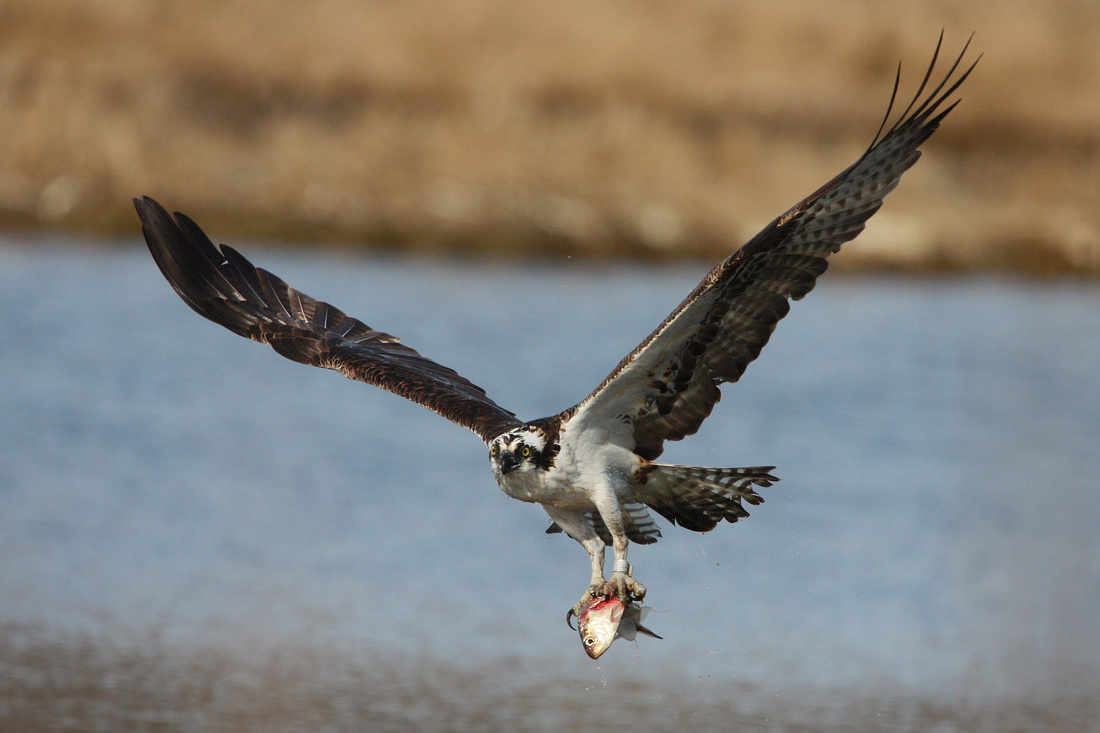

The reason for the increased number of Osprey might signal some good news for a change. I have been interested in the plight of river herring for a several years, since I worked on a story for the Hartford Courant about the Connecticut DEP (now DEEP) efforts to restore the diminishing runs. Earlier this week I stopped at one of the streams that was being restored to see how the fish were running and was surprised to find a big school them. As I was setting up to photograph them, a DEEP technician I first met while working on the Courant story stopped there to count the fish. He told me that last year the number of river herring returning increased, particularly in New London County and this year the early results were also promising, leading to some guarded optimism. The picture below shows the school of Alewives.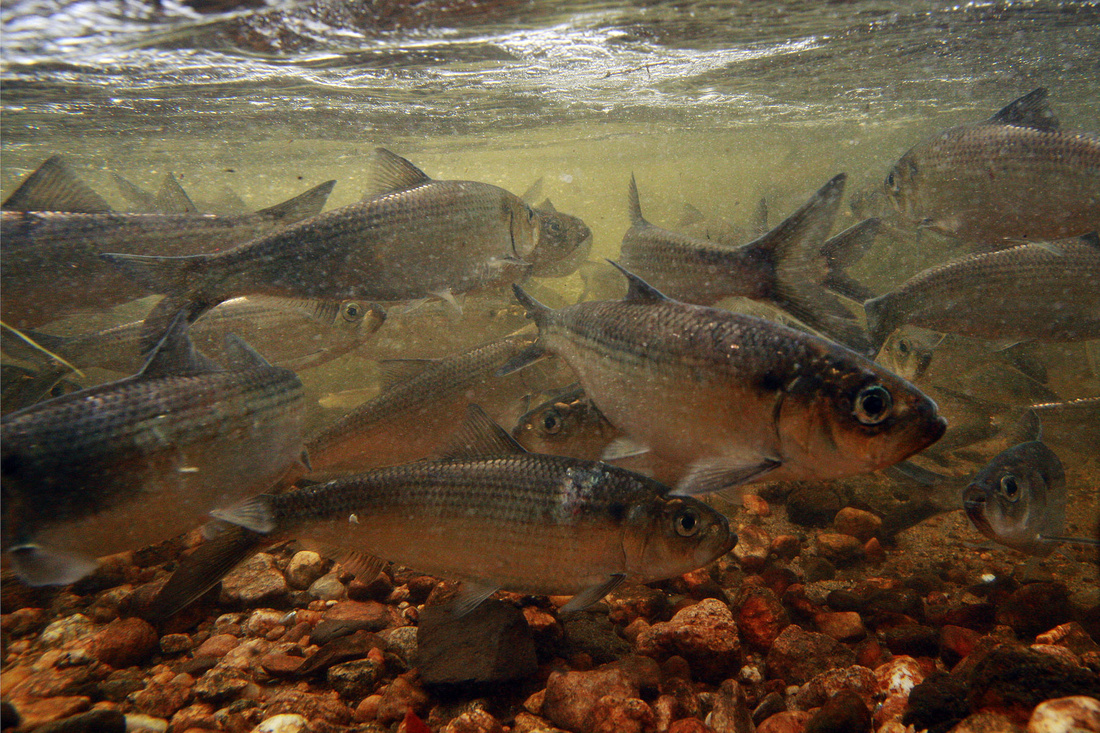

Since Rocky Neck was so hot, I went there every morning and evening that I could. All the pictures in this post except the one above were taken there this past week. I spent a lot of time trying to catch all the different stages of the Osprey's dive for fish, including the first stage when they tuck their wings and plummet towards the water, head first.
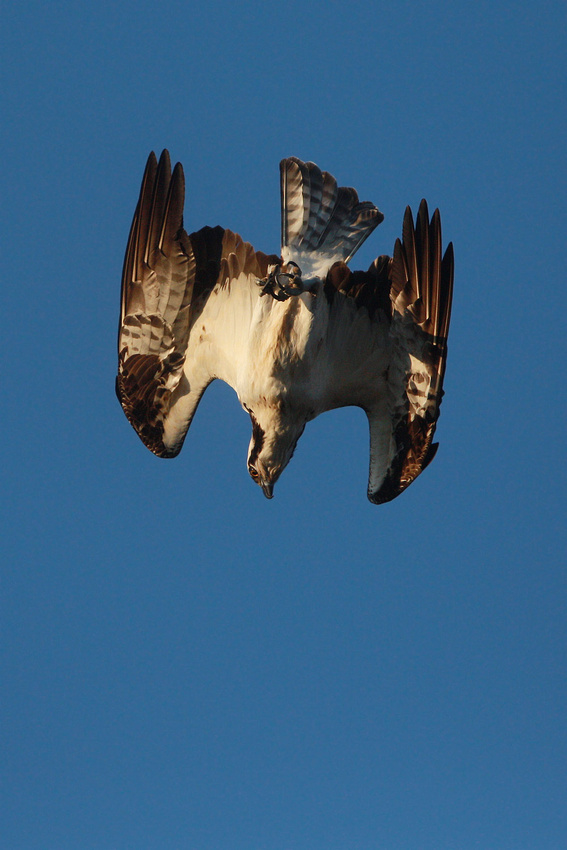

...... followed by the downward glide where they start to deploy their landing gear ......... 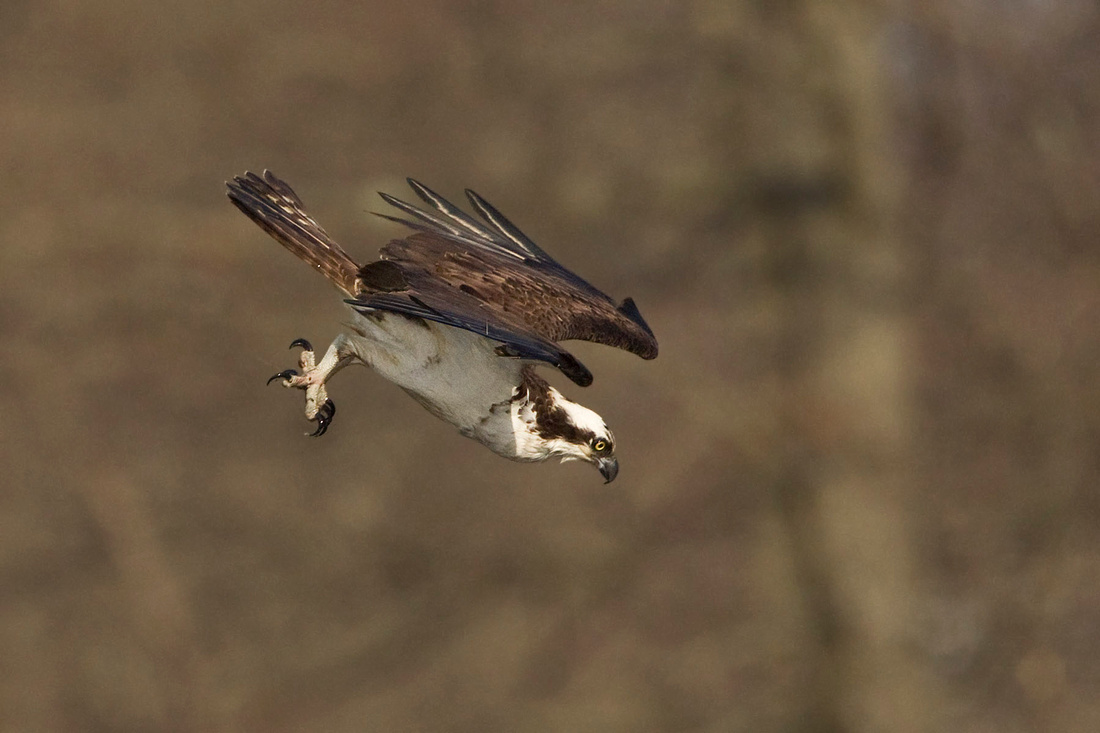

.... and then the hardest to capture, where they throw there feet forward just before hitting the water.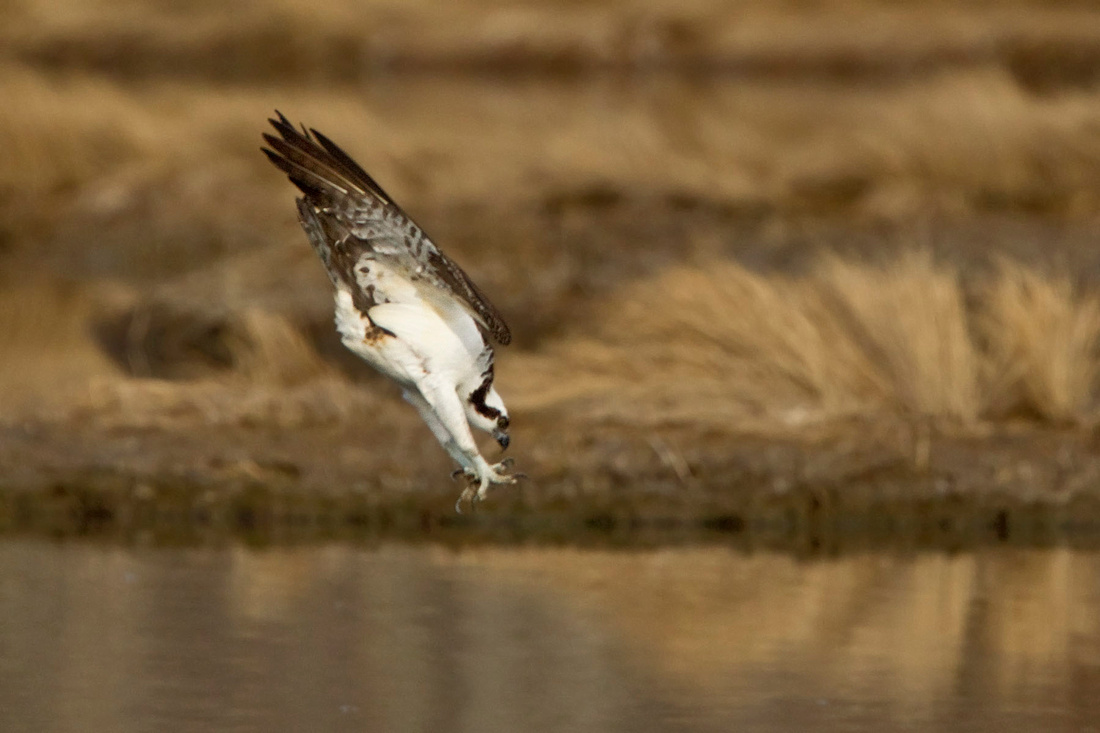

.... which I still need to work on because all my pictures are either soft (not in sharp focus) or completely out of the frame. And then the catches ...


and misses, which were split about 50/50.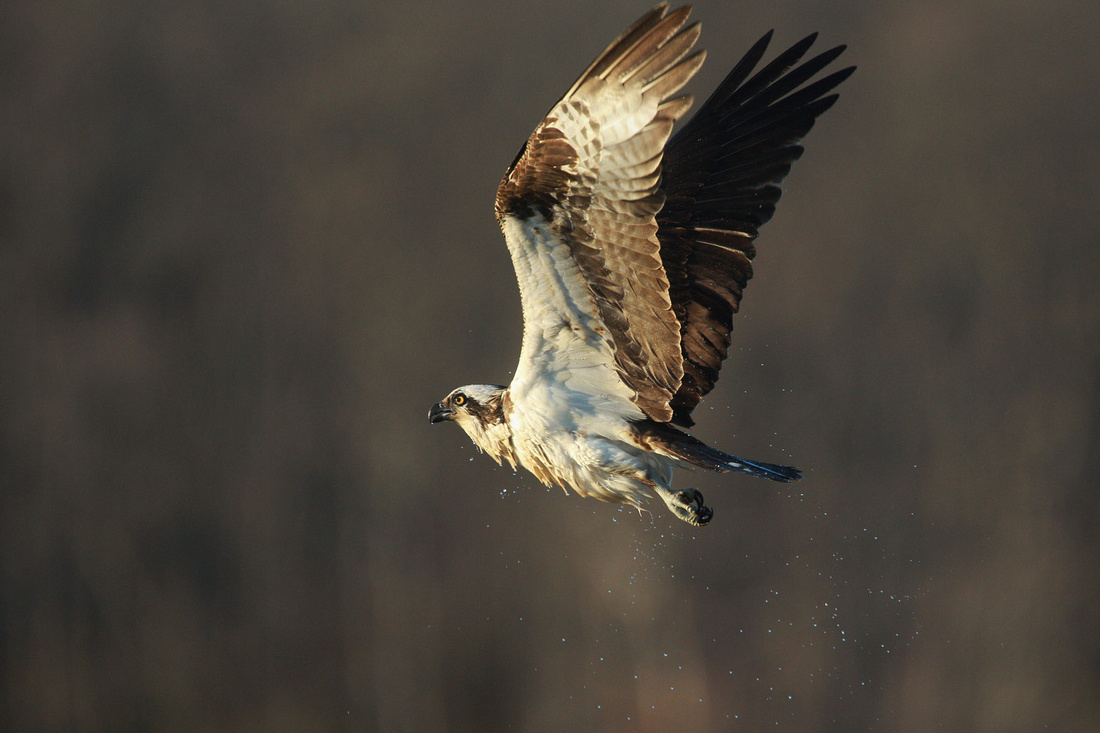

One Osprey hit the daily double, coming up with two fish in one try 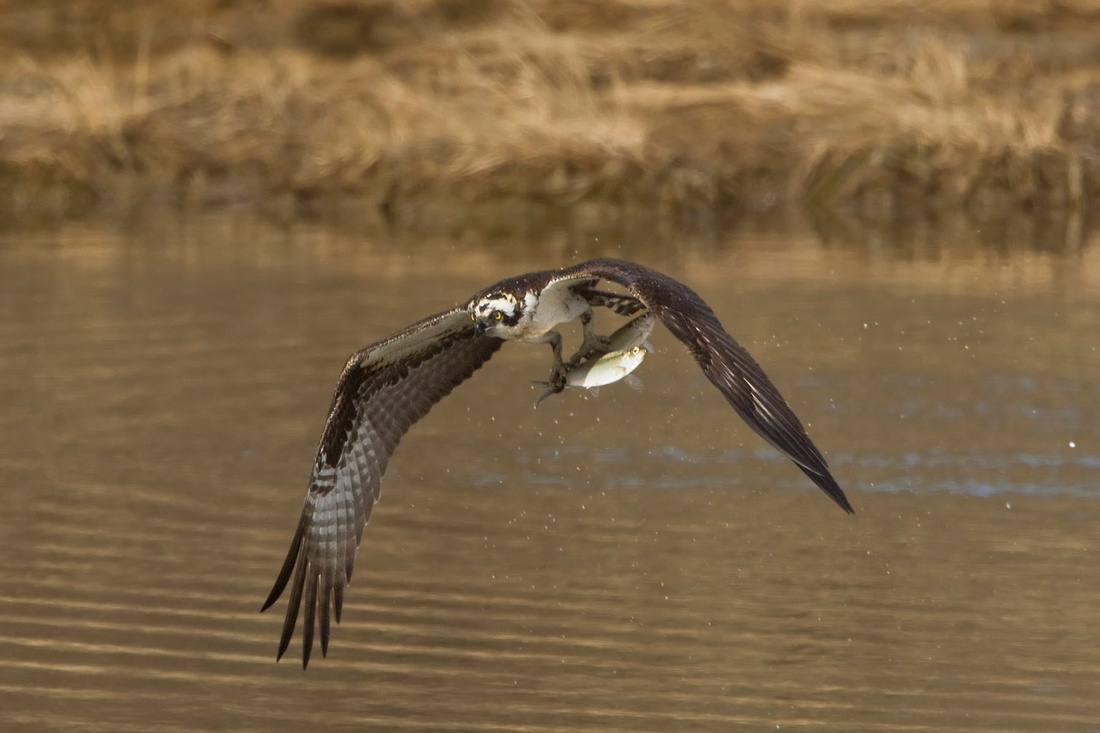

but then couldn't hold both of them, and dropped one back into the water.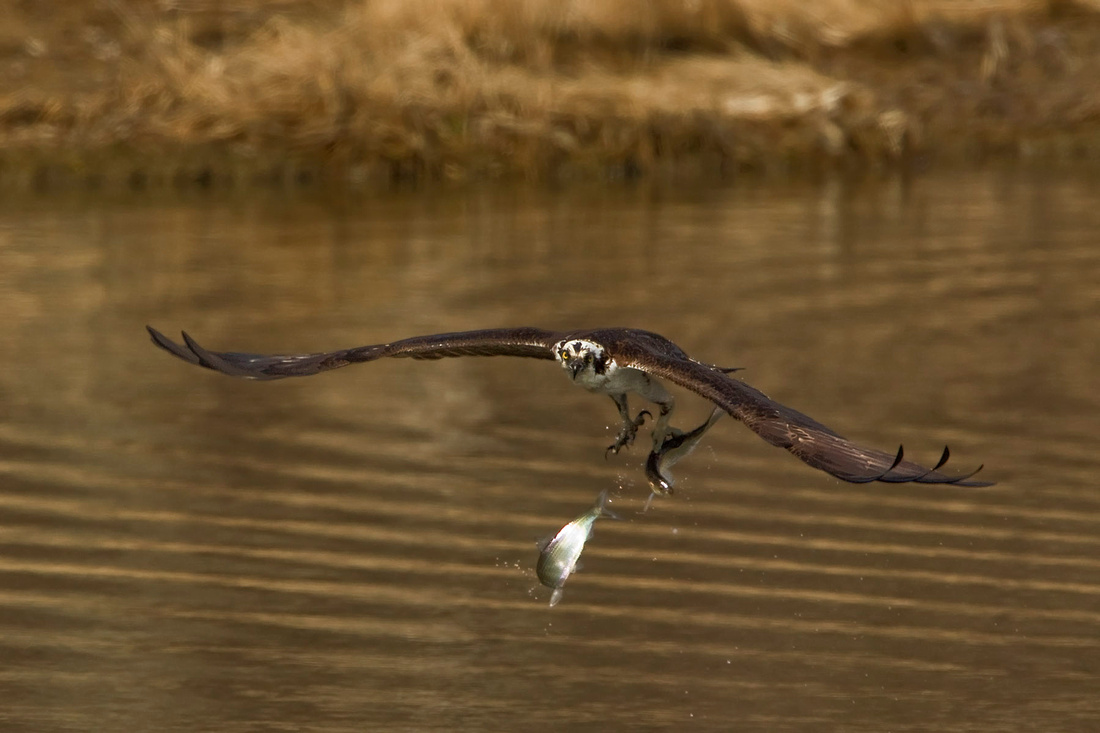

While I continued following the Osprey, now with only one fish, I didn't see what became of the dropped fish, but a few seconds later an aptly named Herring Gull flew by with a mouthful .....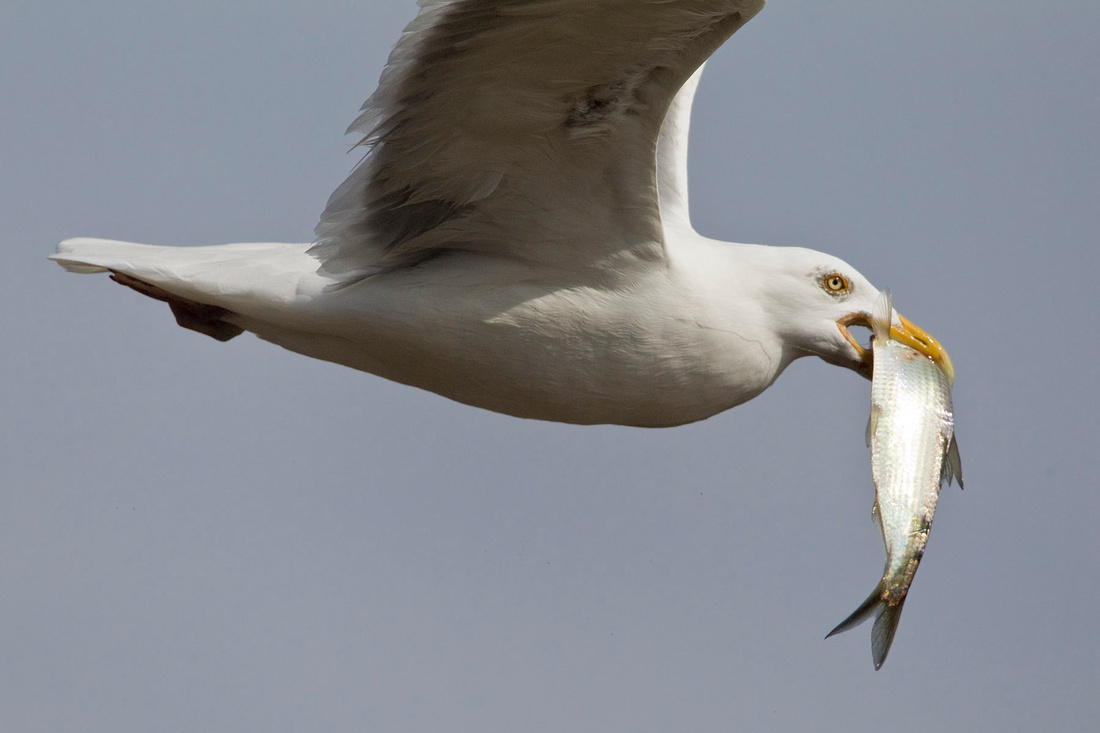

......... which it proceeded to gulp down in mid flight.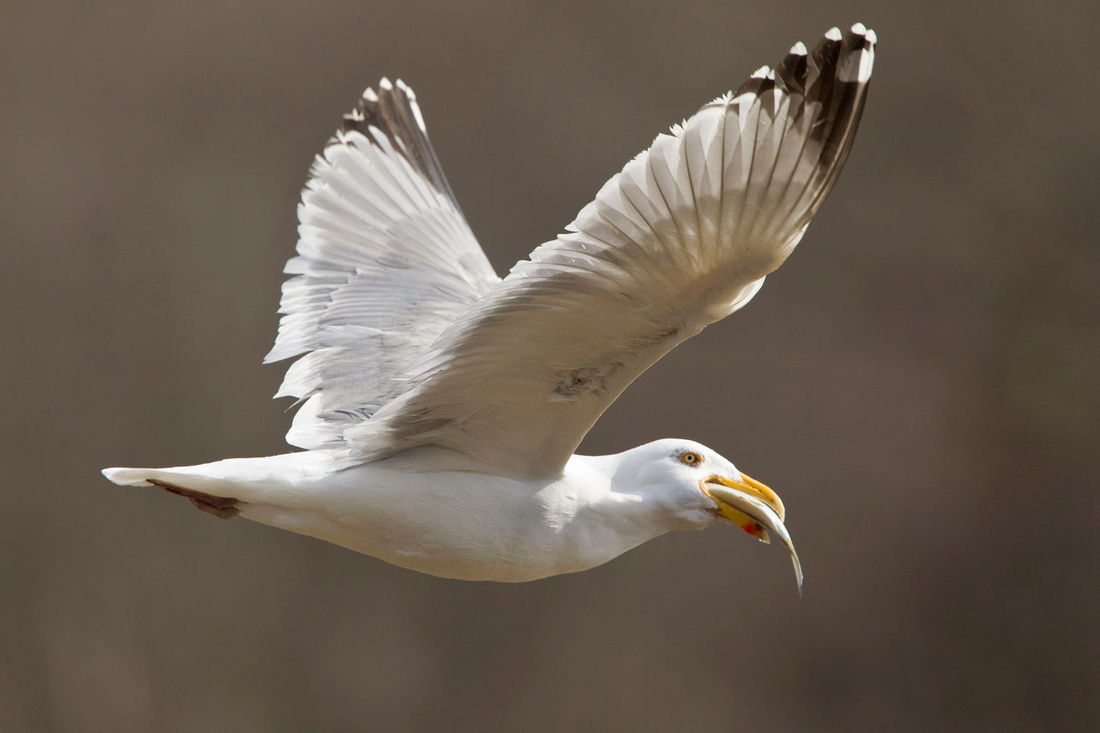

Adding to the excitement this year is the presence of two sub-adult Bald Eagles. Both appear to be four year old year birds, and at least one has been around every day I've visited the park recently. 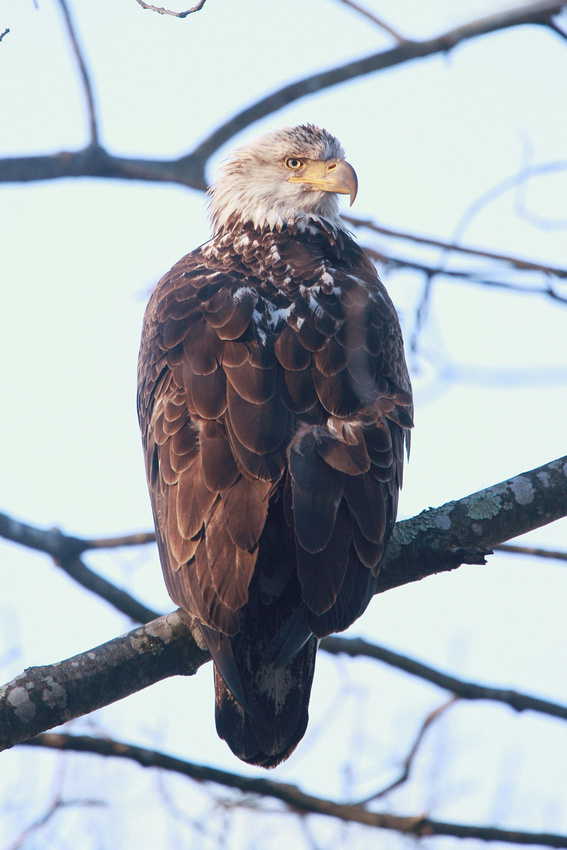

Occasionally one or both of them fly out over the salt marsh putting every bird around into the air.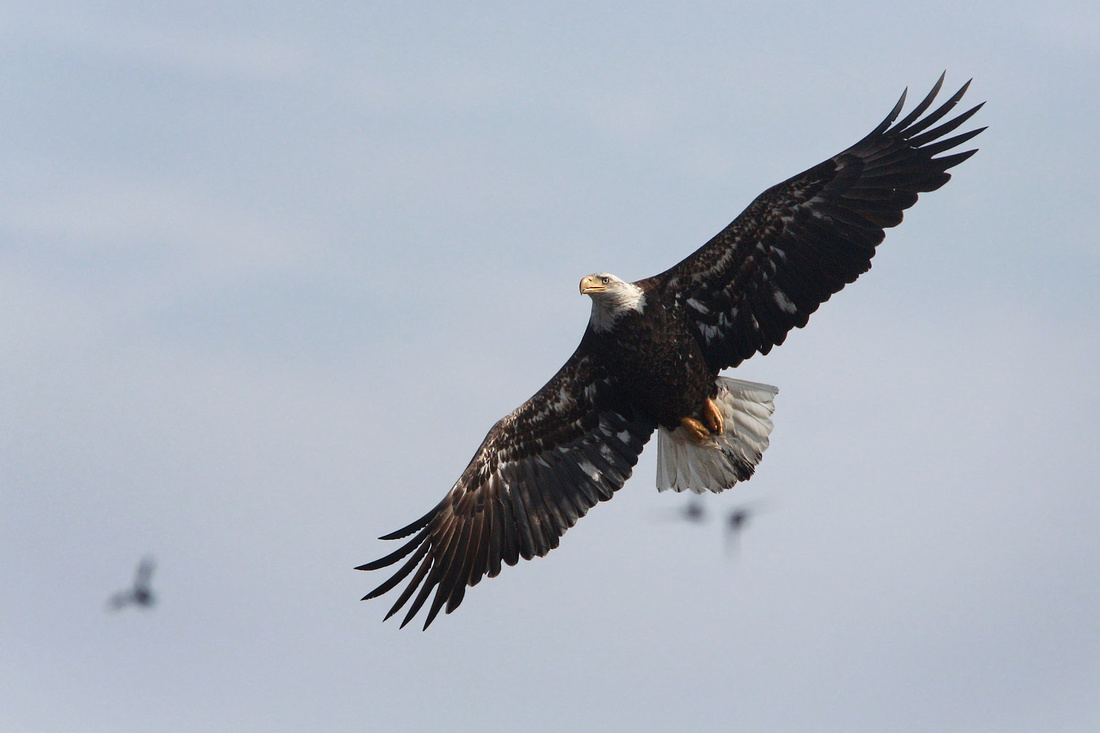

but, most of the time I see them, they are sitting in the trees on the west side of the marsh, waiting for an Osprey to catch a fish ........

then the eagles fly out from the trees and the chase is on.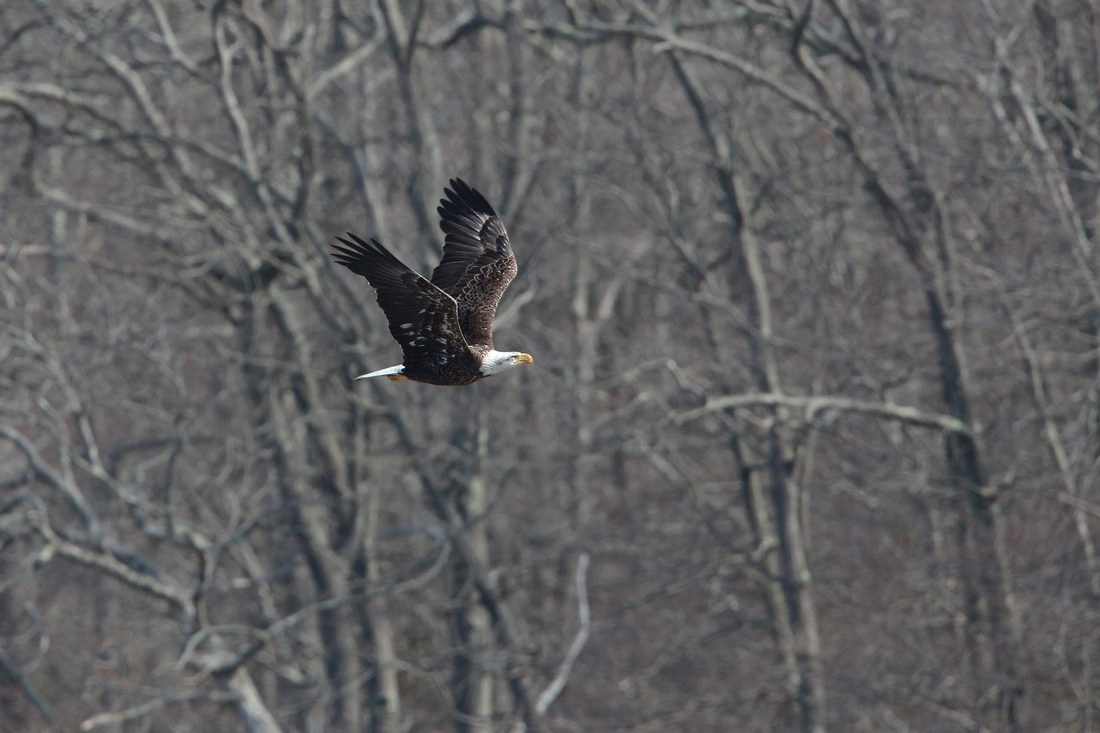

One eagle chased an Osprey returning to its nest with a clump of seaweed for nearly a minute (based on the time stamps from my pictures). The eagle was close enough to easily see the seaweed, but continued the chase until the Osprey released it and the eagle grabbed it in midair. The pursuer returned to its perch with the loot, and was joined by its cohort, but they seemed a bit puzzled by what to do with it.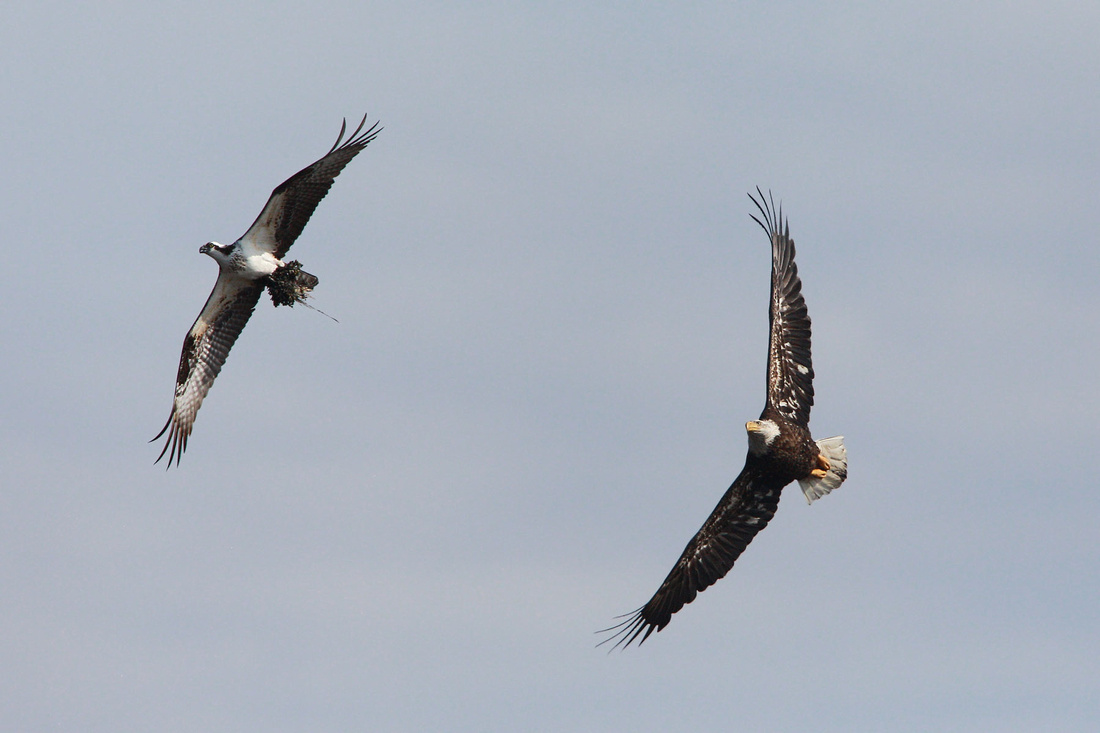

The high number of Osprey in the marsh following the herring run has had the resident nesting Osprey pair on edge. By the end of the week the resident male spent much of his time trying to drive off the interloping Osprey, fishing in close proximity to their nest. Some of the intruders flew over their nest clutching fish and chirping loudly in an attempt to lure the nesting female away, which drew more aggitated responses from the male. Add to that the presence of the Bald Eagles, making every bird in the marsh nervous, and the stage was set for high drama. With the resident Osprey continually chasing off other Osprey, the Bald Eagles chasing Osprey with fish, even the lowly Herring Gulls pursuing Osprey with fish on occasion, there was seldom a dull moment (a slight exaggeration) in the park the past week. Even a nervy Red-winged Blackbird got into the act, hounding a poor Osprey that strayed too close singing perch.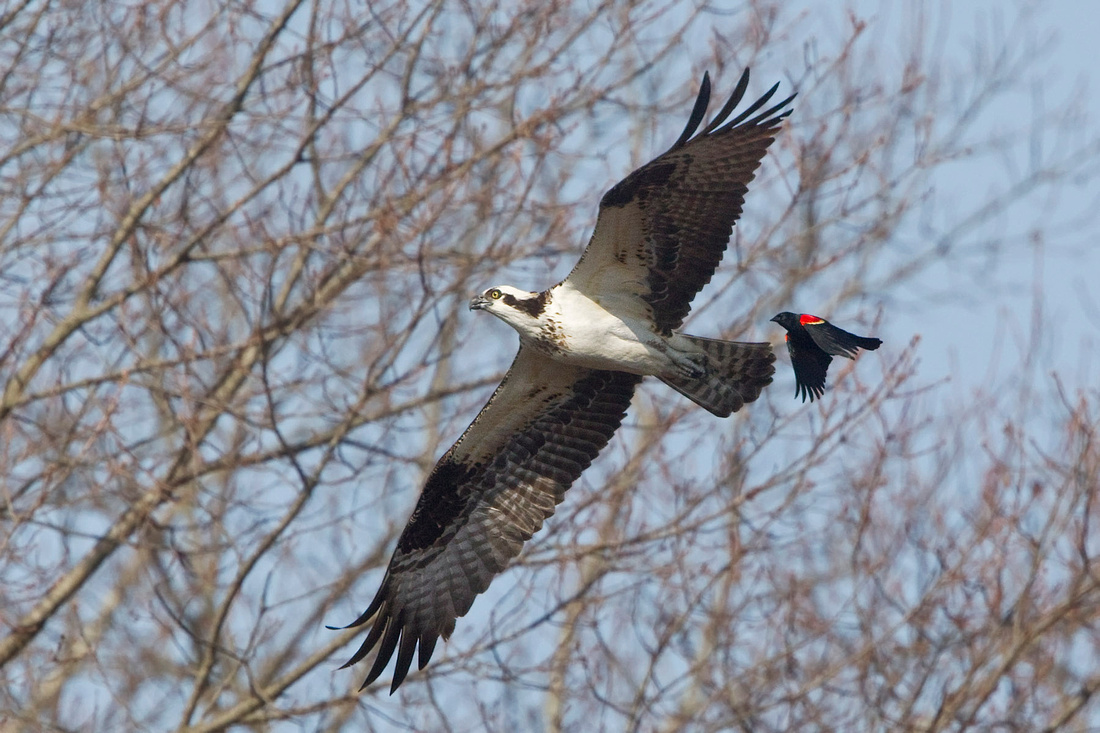

Add to that the squawking egrets, the dozens of ducks erupting into the air at the sight of the eagles and the comings and goings of the awkward cormorants and Rocky Neck has been quite a hot spot the past week.